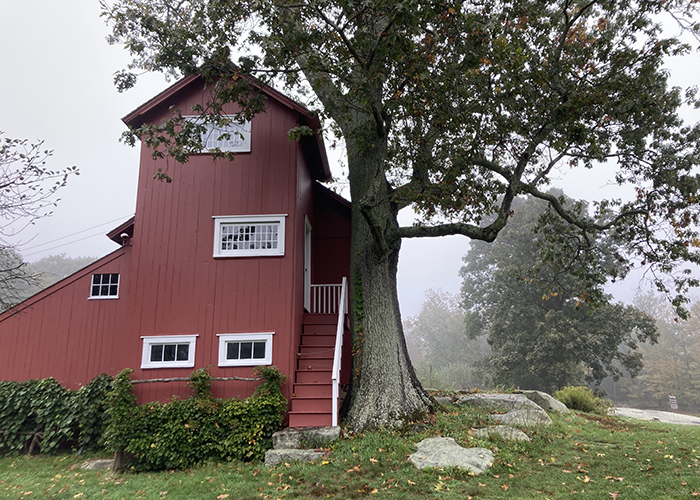 Previous Day |
Waltham, MA → Ridgefield, CT → Waltham, MA 345.0 mi (555.2 km) |
 Next Day |
I’m clattering into Connecticut, everyone!
Today’s going to be my longest schlep of this whole New England trip, but even so, it’s amazing how compact the Northeast is, compared to the rest of the country! An hour and a half from Waltham, I was already in another state, viewing the capitol of Connecticut at Hartford! Like Rhode Island’s capitol, this one’s a glorious, towering representation of the tiny Constitution State, built from granite and marble and capped with a gold leaf dome! It was just the first sight to shine through the growing clouds and anticipated storm!
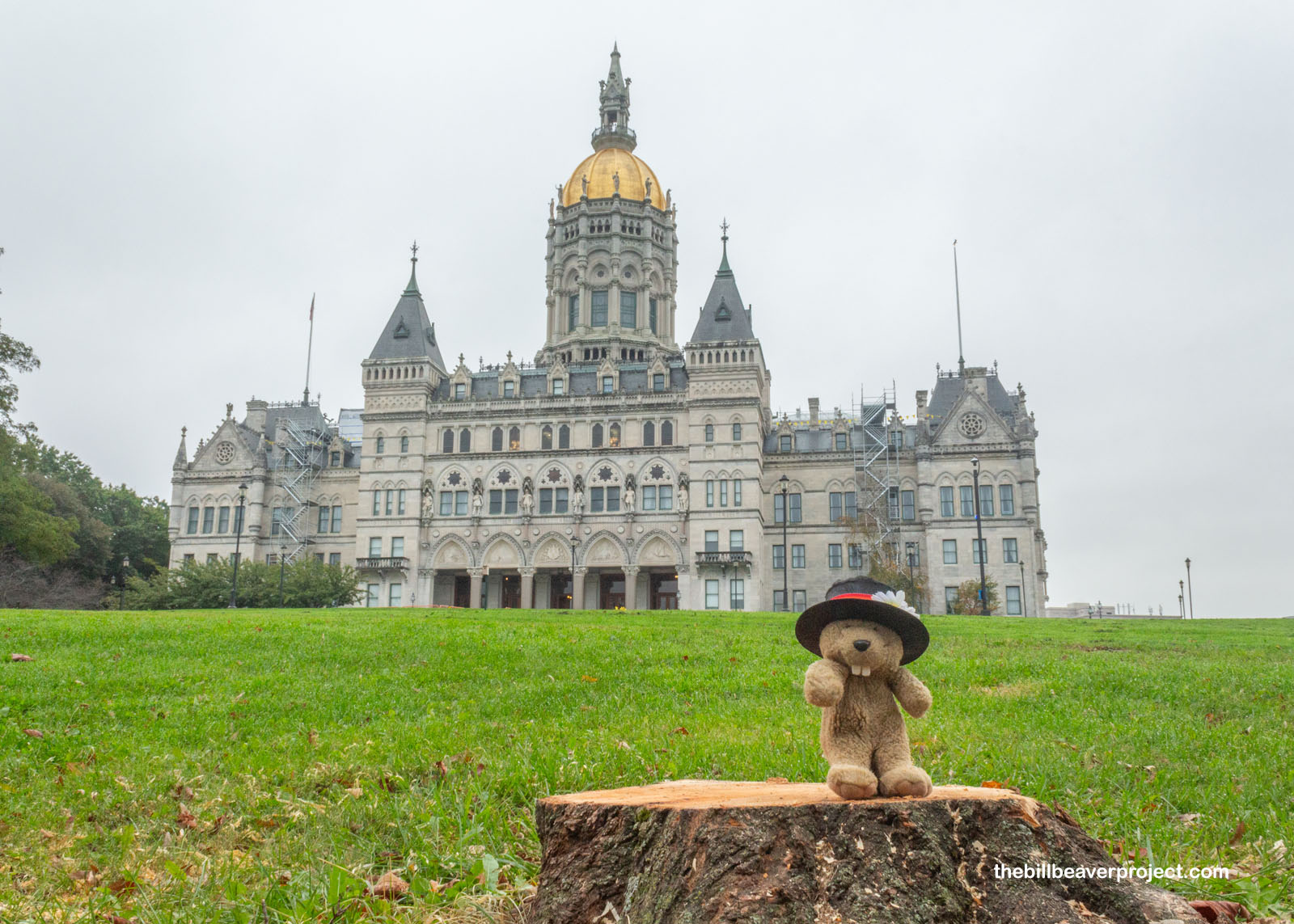 |
Nearby stood a monument to a core piece of Connecticut’s identity, site of the legendary Charter Oak! See, in 1662, King Charles II issued a Royal Charter allowing the residents of Connecticut some autonomy in elections and decision making. After all, it took a long time for orders to cross the Atlantic! His successor, James II, saw things differently and sent Sir Edmund Andros to reclaim the Charter and return all the colonies to subservience. During a long debate between the colonists and English agents, the meeting room went dark, and the Charter disappeared! It was hidden and preserved within the Charter Oak! Though the thousand-year old oak fell in a huge storm on August 21, 1856, the Charter itself is still preserved, framed by oakwood, in the Museum of Connecticut History!
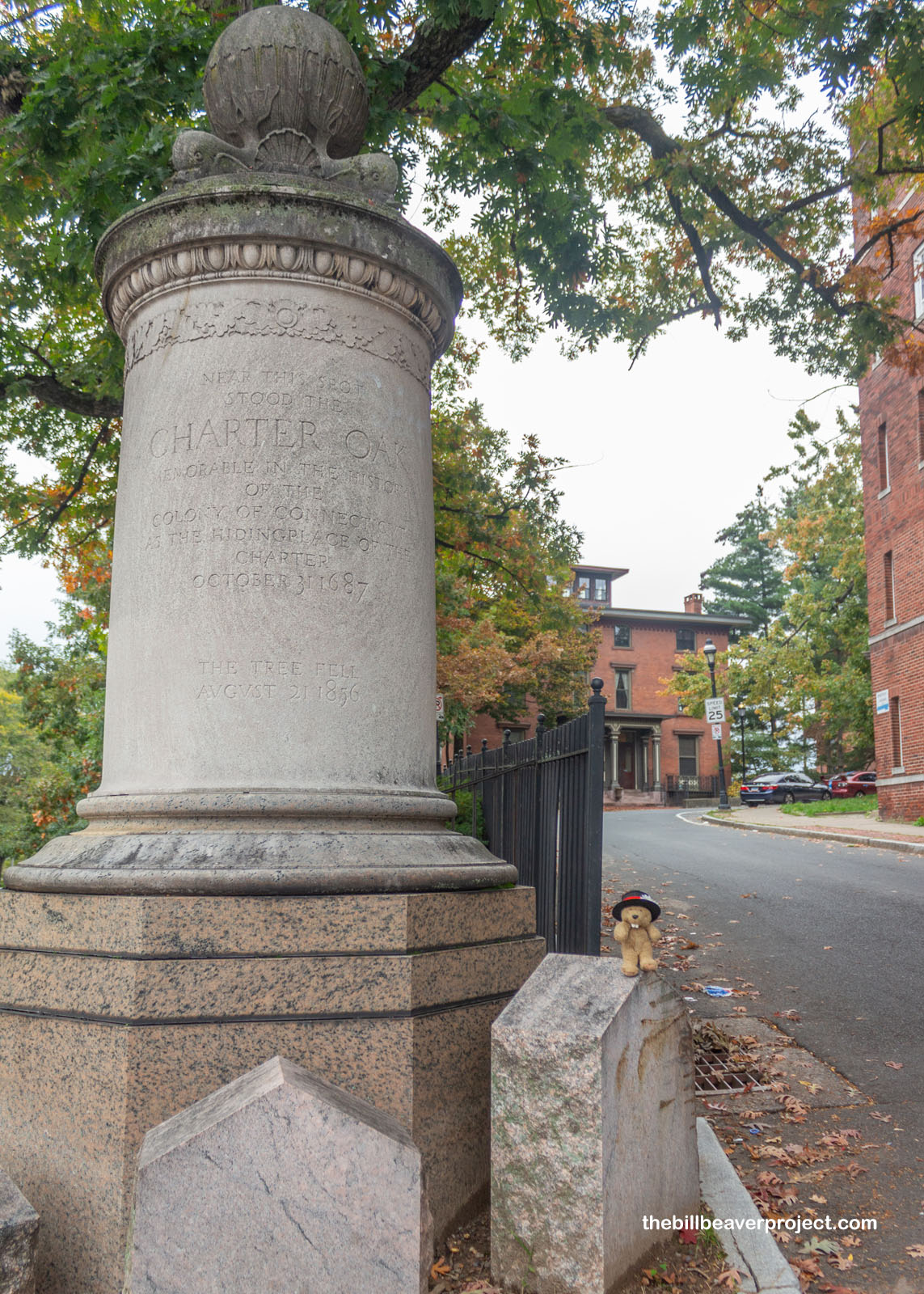 |
From there, I pulled up to the first of two national park sites I meant to visit today, only it’s very much a park in the making (it doesn’t even have a sign!). Coltsville National Historical Park was established by the Defense Spending bill of 2014 (9 years ago), but there was a catch! Samuel Colt’s old armory has been converted into an apartment and commercial complex called Colt Gateway! Before it can be converted into a park, there need to be written agreements with the City of Hartford and landowner, Colt Gateway LLC, plus the owner needs to donate land and buildings to serve as the park!
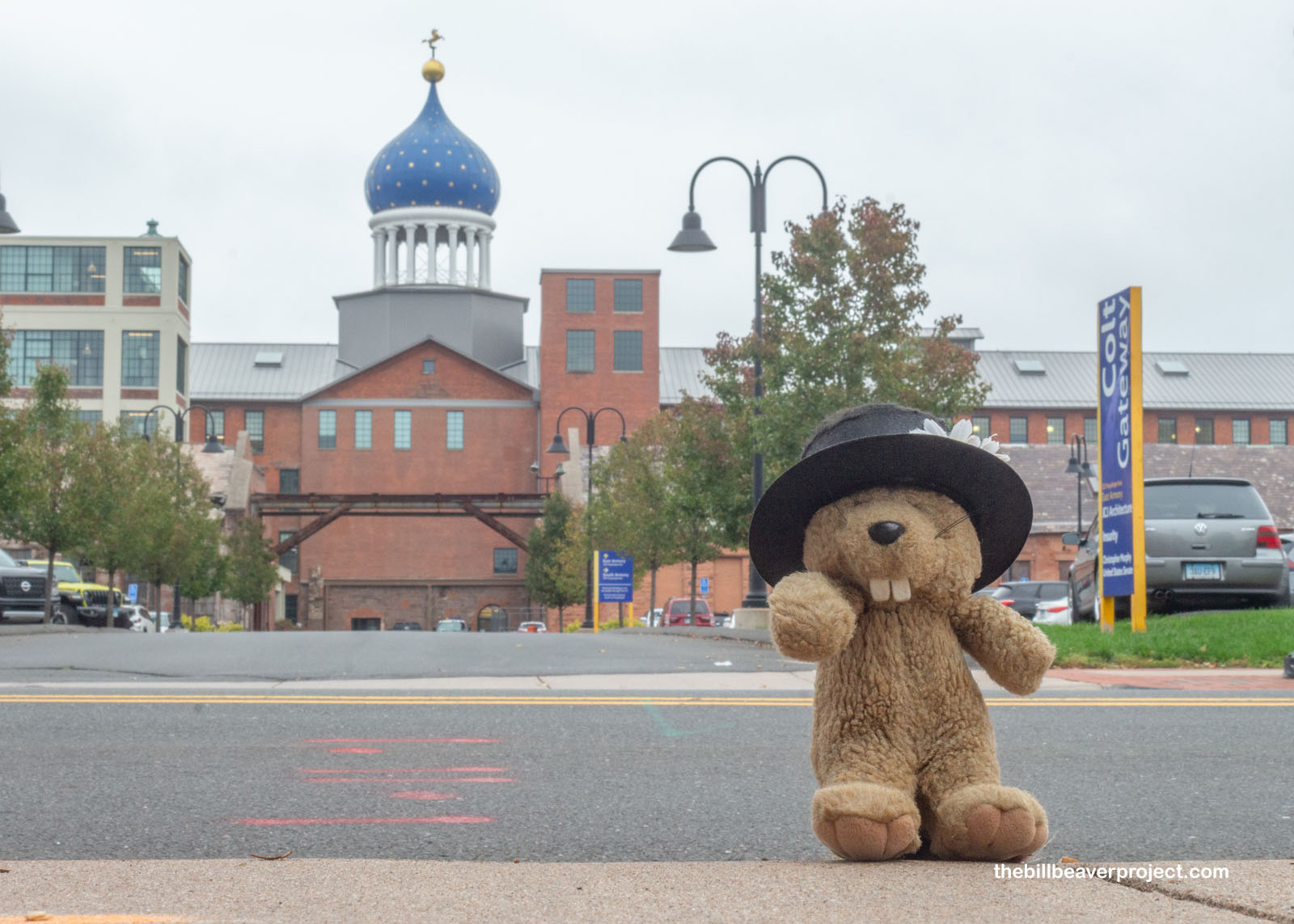 |
But the structures are here, from smokestacks to brownstones, dating back to the 1850s when the inventor of the Colt Revolver picked himself up after his first firearm company failed in Paterson, New Jersey and built a whole town for a new enterprise: Colt’s Patent Firearms Manufacturing Company. The Forge and Foundry buildings at the entrance to the complex are the only two that survived a devastating fire in 1864. In them, metal was melted and shaped, while the cinders and smoke funneled out through a signature flue system. The key to this Colt factory’s success was designing their weapons to have interchangeable parts for easy assembly on a line, producing 150 weapons a day by 1857!
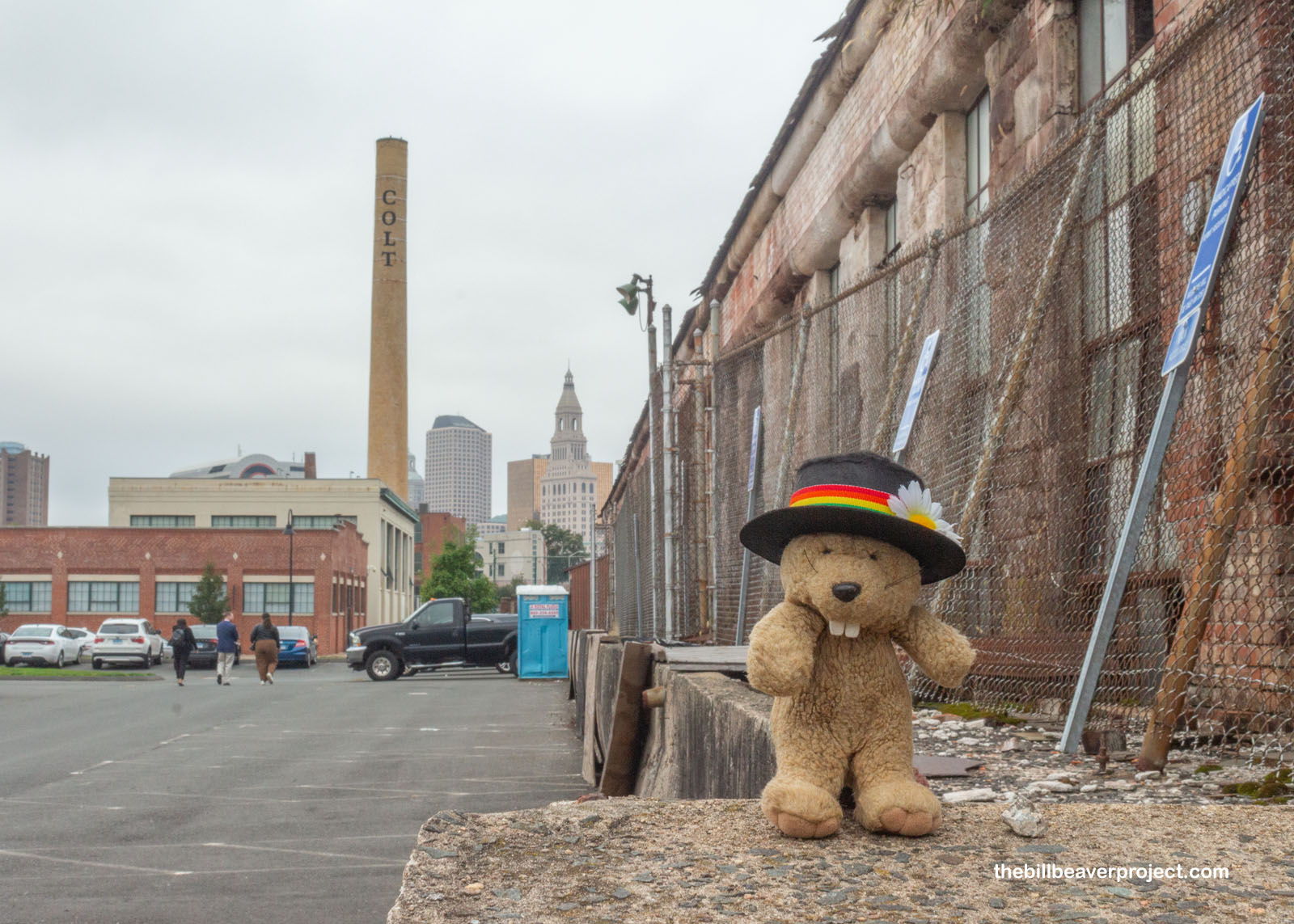 |
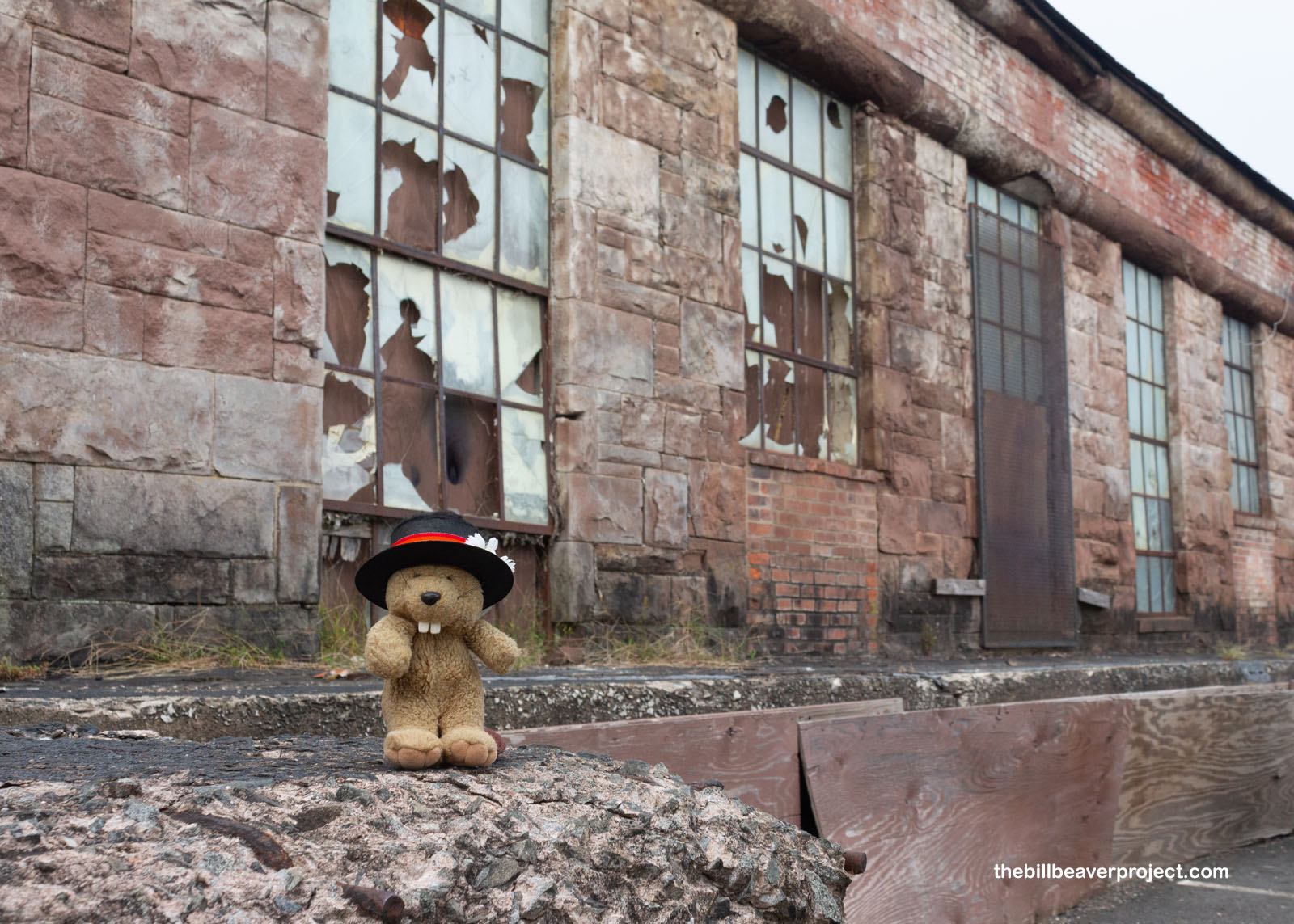 |
But the East Armory was the crown jewel of the Colt machine, the largest private armory factory in the world! It was unique for being well lit, ventilated, and lit by gas power, and on top of it all, it sported an eye-popping signature blue onion dome! Inspired by Mr. Colt’s travels in Russia, this dome was designed by Octavius Jordan and featured a rearing horse, the Rampant Colt, on top! The dome today was rebuilt by Mrs. Colt after half the factory burned down in that 1864 fire!
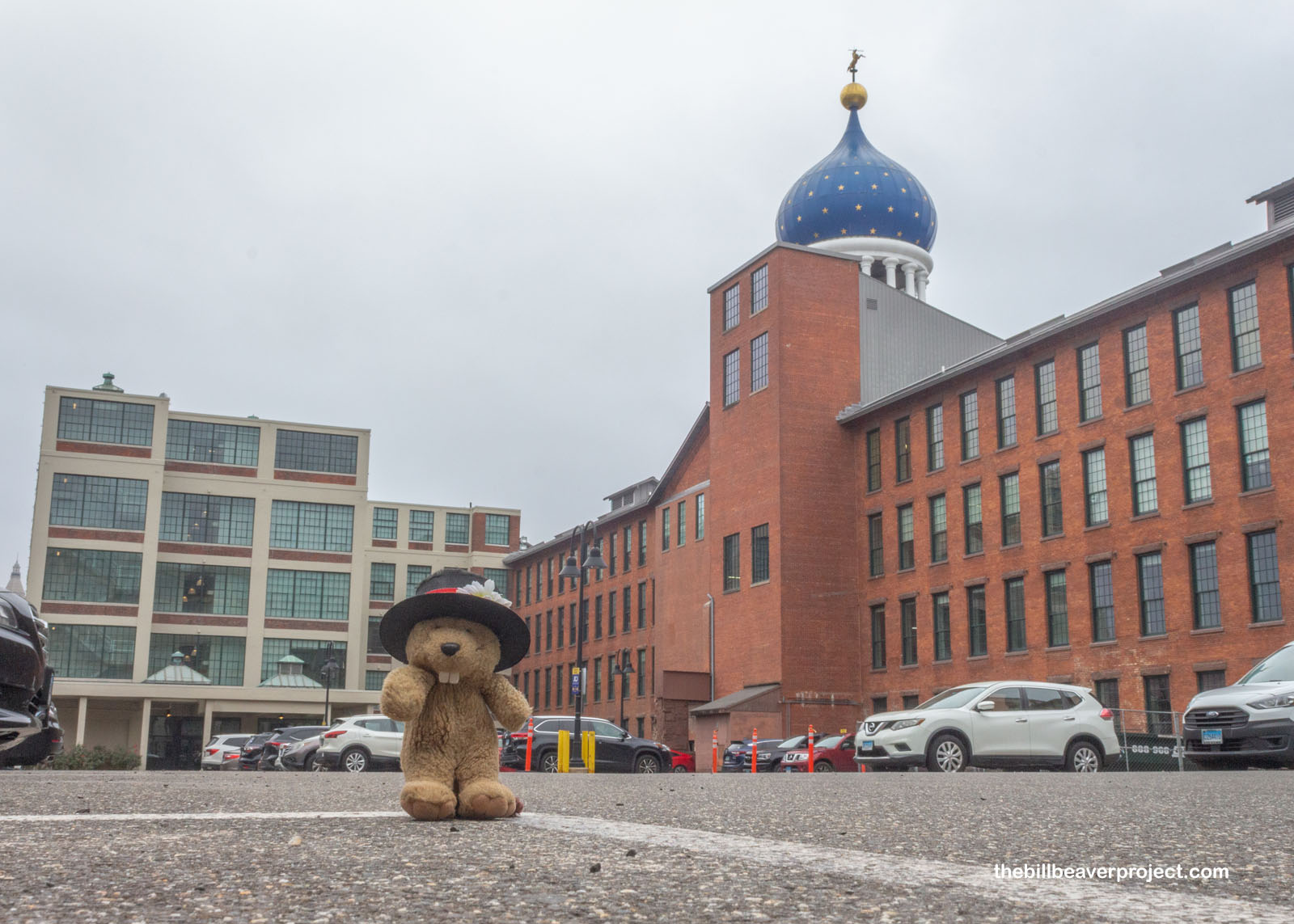 |
To fuel the machine that armed the Texas Rangers during the Mexican-American war, and the Union Army during the Civil War, Coltsville couldn’t just be a factory; it had to be a town! 145 families lived in the twenty houses next to the armory, each given architectural thought (Gothic Revival or Italianate) with space between to give each family fresh air and recreational opportunities. A community center and beer hall catered to the mostly German and Irish immigrants he was hiring. This was in contrast to the compact, dormitory-style houses in other company towns across New England, like Lowell!
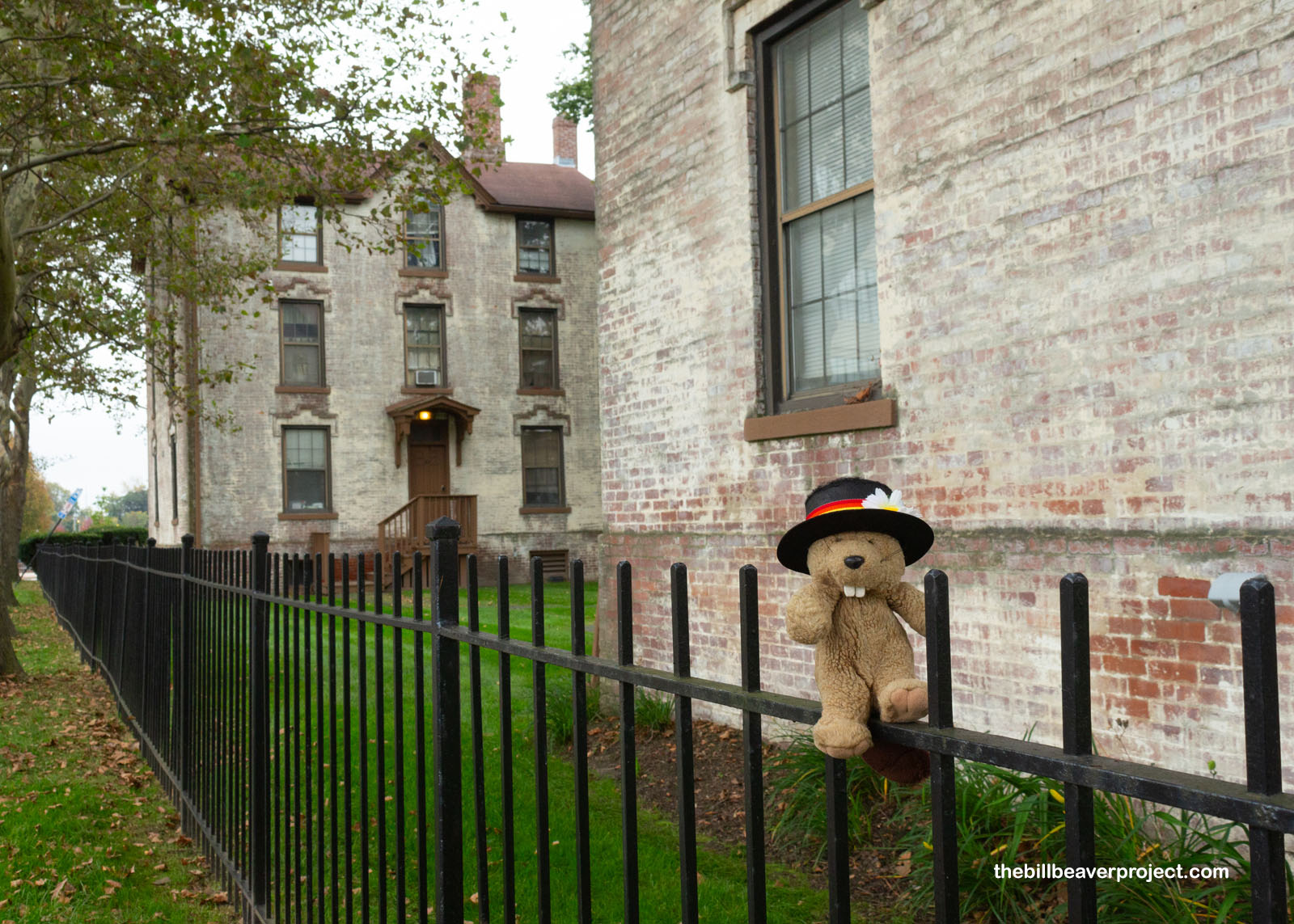 |
But housing at Coltsville was nothing quite like the neighborhood I was going to visit next. This was the wealthy Nook Farm neighborhood, home to politicians, business leaders, and literary greats, like Harriet Beecher Stowe, sister of abolitionist Henry Beecher and author of 30 books, in particular, Uncle Tom’s Cabin! When she and her husband, Calvin, first moved to Hartford, it was to their dream home, called Oakholm, but as factories proliferated in their neighborhood, the Stowes moved here, to Ms. Stowe’s final home on Forest Street, the same year as another famous writer became their immediate neighbor!
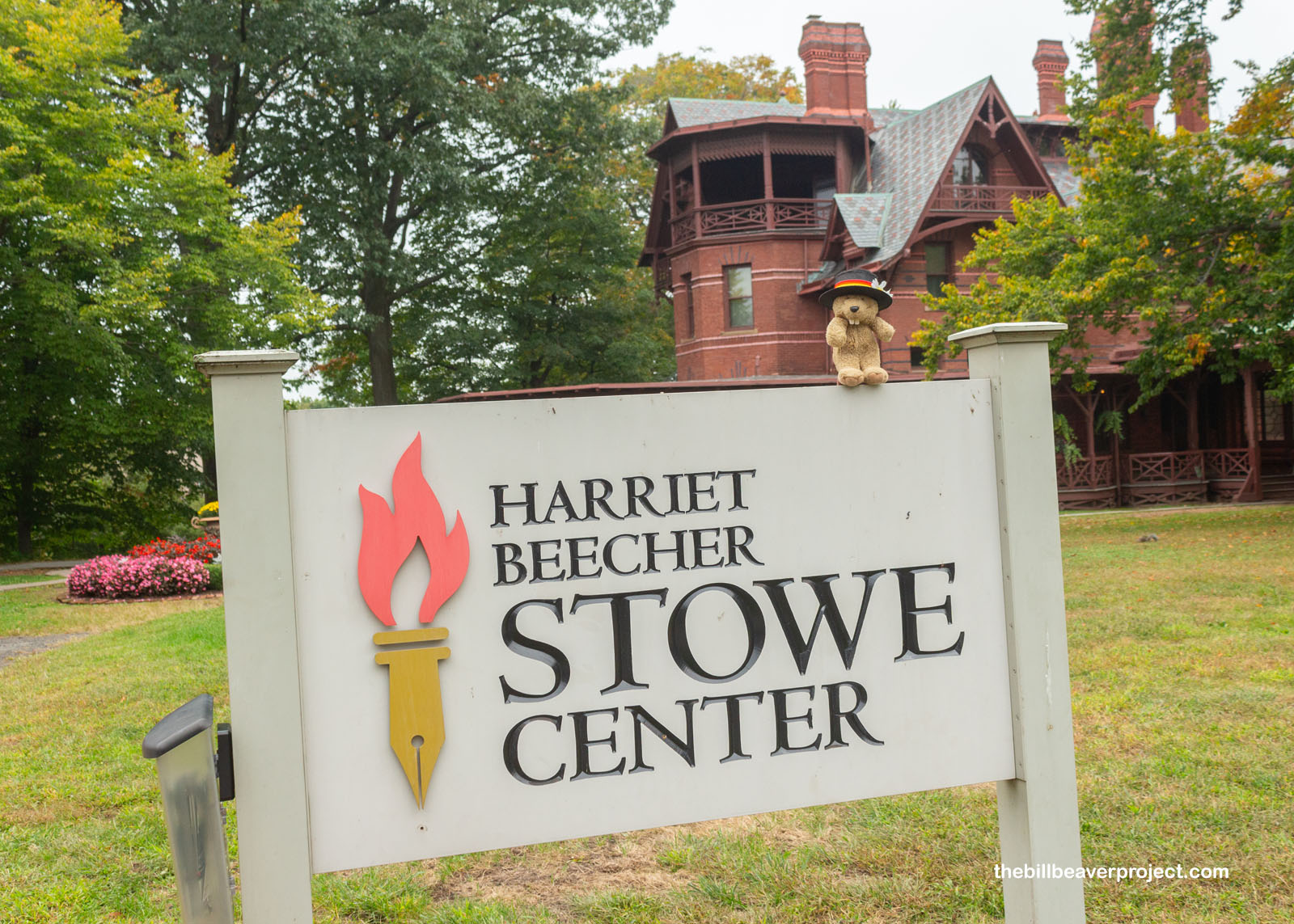 |
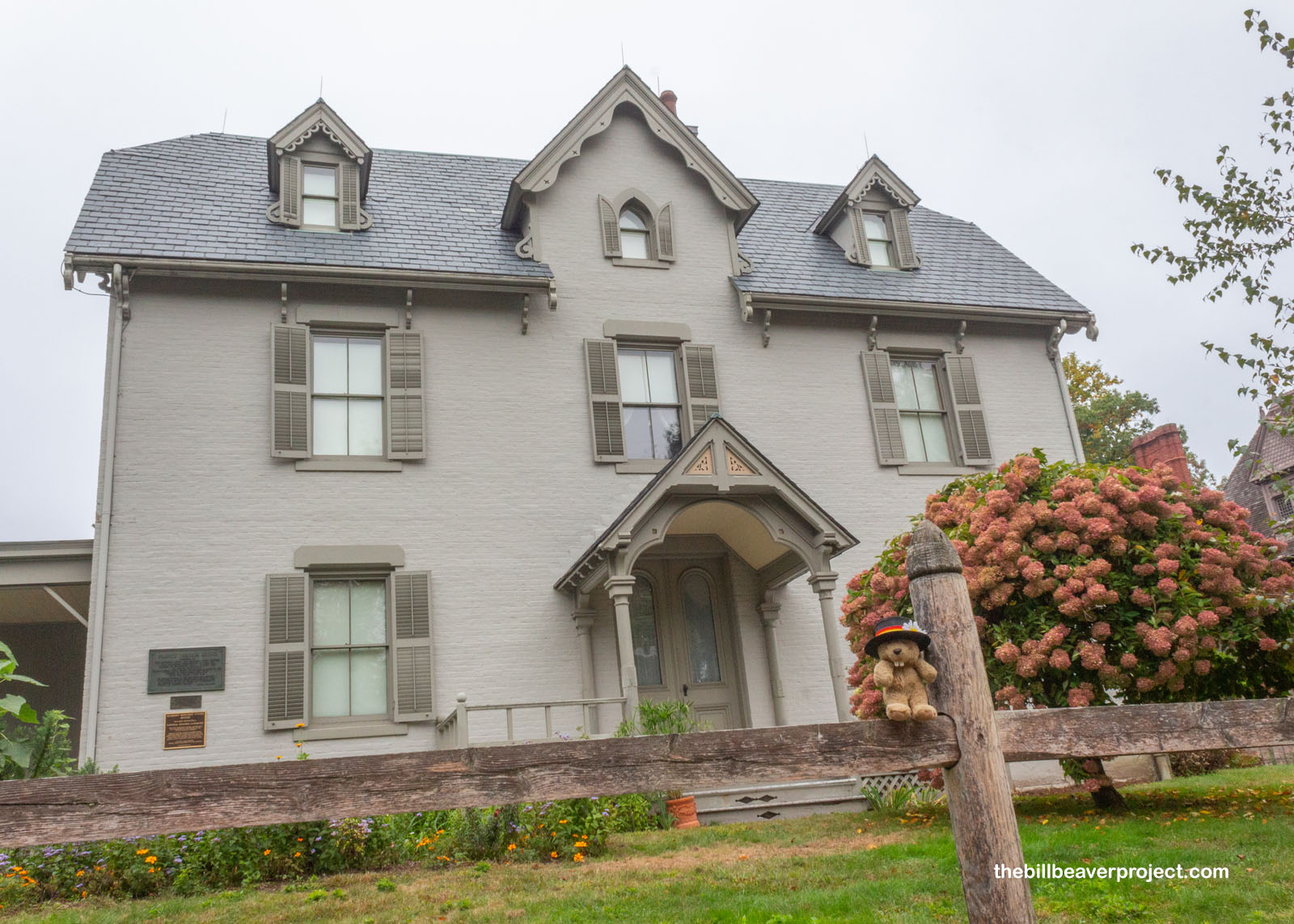 |
Samuel and Olivia Clemens were abroad in August 1873 when Edward Tuckerman Potter began construction on their Nook Farm home. This was in the afterglow of “Mark Twain’s” first big hit, The Celebrated Jumping Frog of Calaveras County (1867) and three years before The Adventures of Tom Sawyer catapulted him into literary stardom! That was written in this house, by the way, along with The Adventures of Huckleberry Finn! The house itself was designed to be eccentric and asymmetrical with painted brick and many chimneys. The interior was a hodgepodge of Moroccan, Indian, Japanese, Chinese, and Turkish influences, designed by Candace Wheeler‚ Lockwood DeForest, Samuel Coleman, and Louis Comfort Tiffany!
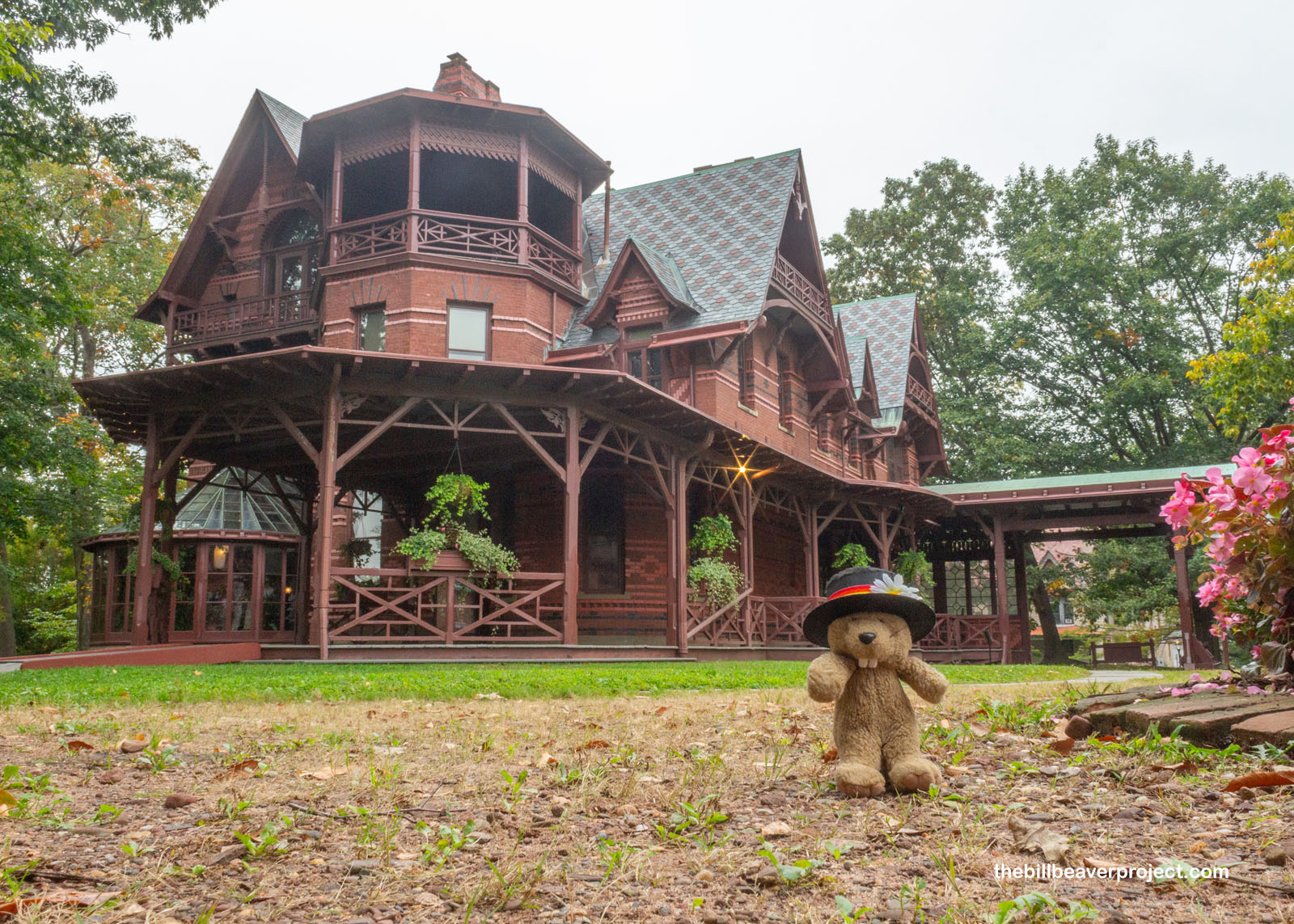 |
When he wasn’t “loafing scientifically,” Mr. Clemens was busy writing new novels, short stories, essays, and more! But the process was rough! Sometimes, the stories would just stop, and he’d have to loaf some more to get them back. He changed his work area in the house multiple times before settling on the billiard room, but the family also traveled to upstate New York and Maine, where he’d have to find ways to write in a friend’s room or a tent! This may have been a dream house for Mark Twain, but the life of a writer is truly relentless!
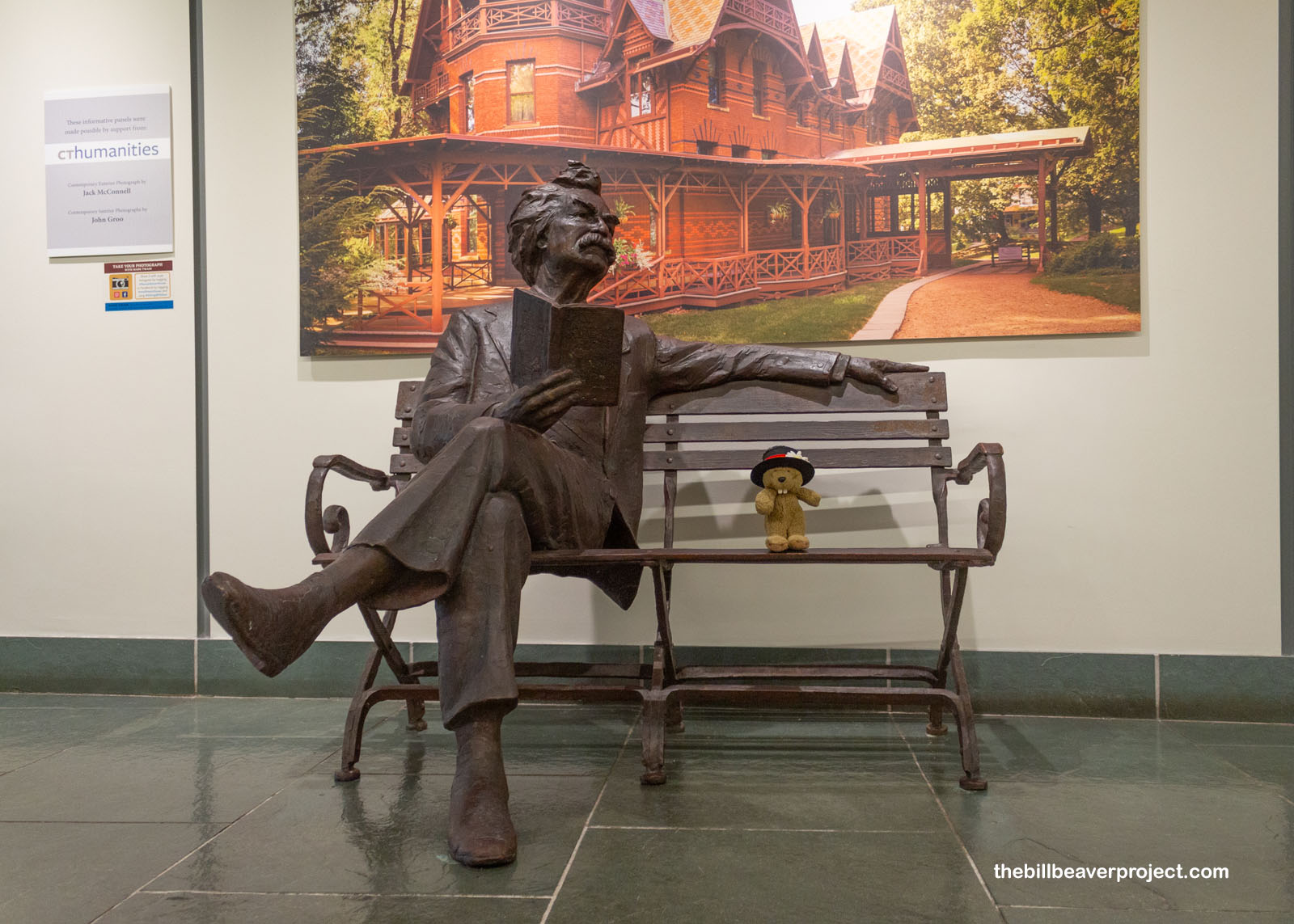 |
I, myself, had no time to loaf, because daylight was passing and rainfall was oncoming! That sent me another hour and a half west, near the border with New York State, where the second of two national park sites awaited me: Weir Farm National Historical Park!
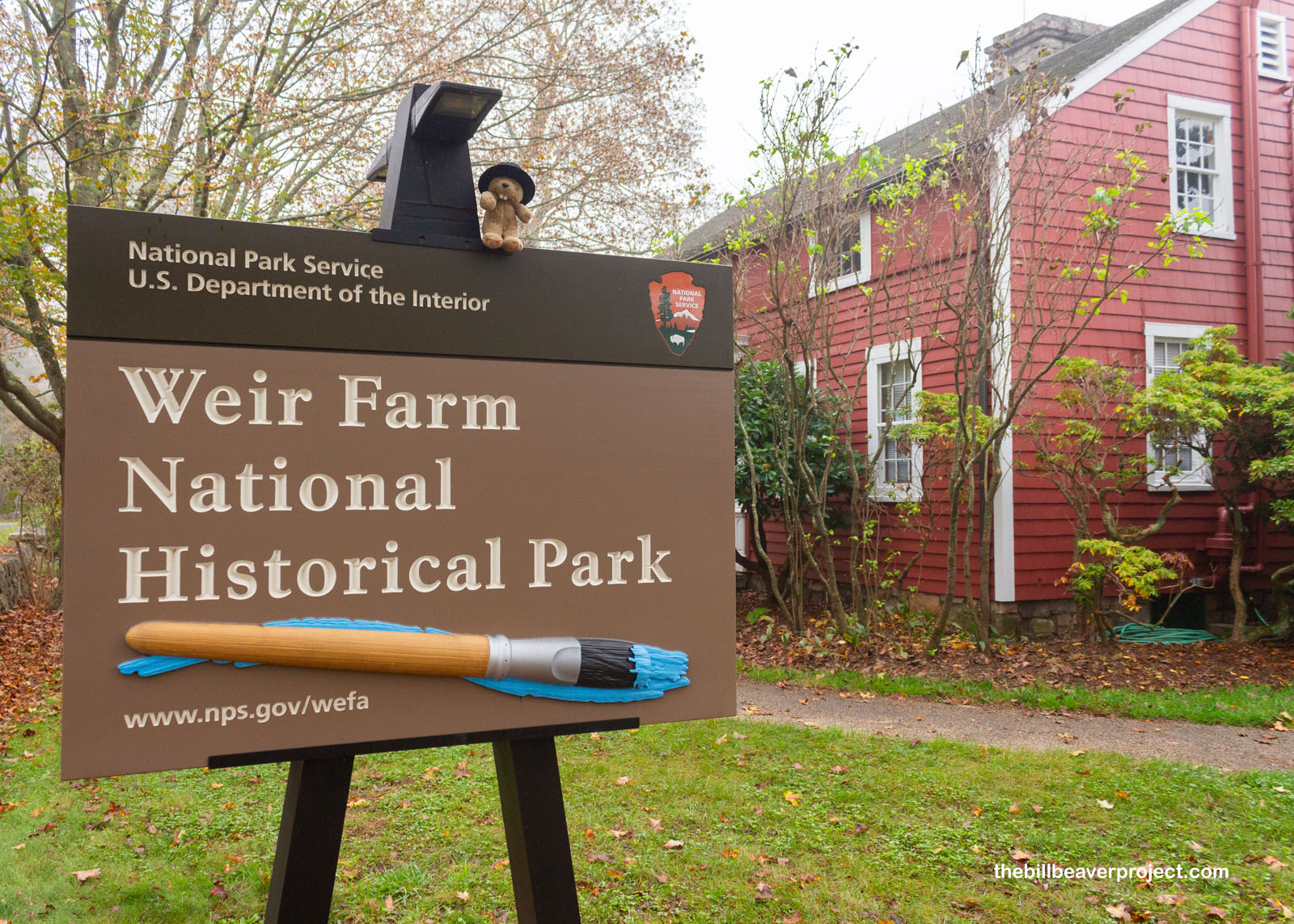 |
To me, farms mean animals, but the first animals I saw here were not at all the ones I expected! There were painted bears all over the place, which, if the paintbrush on the park’s sign wasn’t clue enough, proved beyond shadow of a doubt that this misty farm was an artist’s retreat!
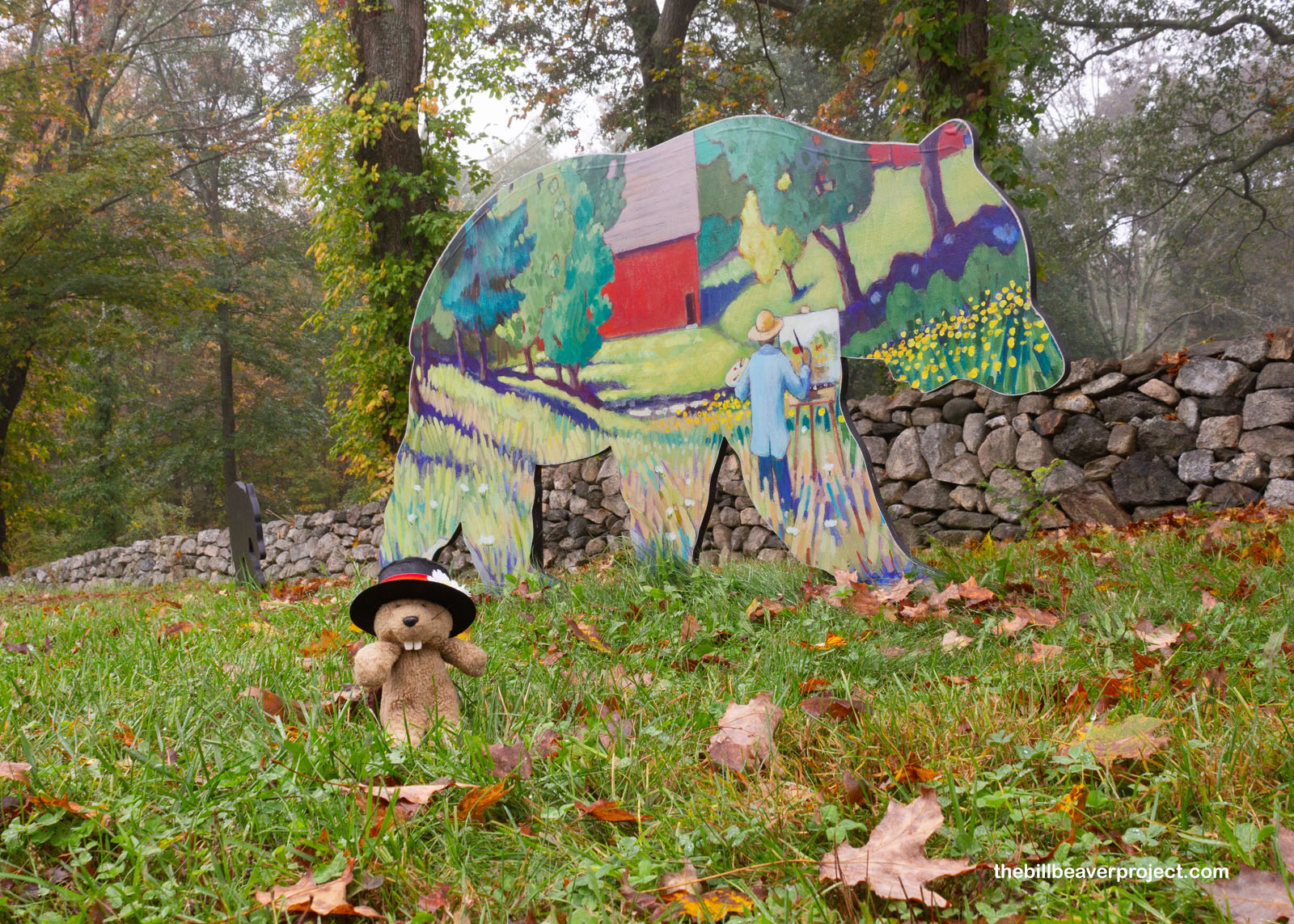 |
That artist was Julian Alden Weir, born in West Point, New York and educated at both the New York National Academy of Design and Les Ecole des Beaux-Arts in Paris! Originally, he focused on painting portraits and was friends with the likes of William Merritt Chase and Winslow Homer, but then he accepted an unbeatable offer: Erwin Davis offered to trade his 153-acre farm for a painting Mr. Weir had acquired in Europe, plus ten dollars! Mr. Weir, and his new wife, Anna, agreed!
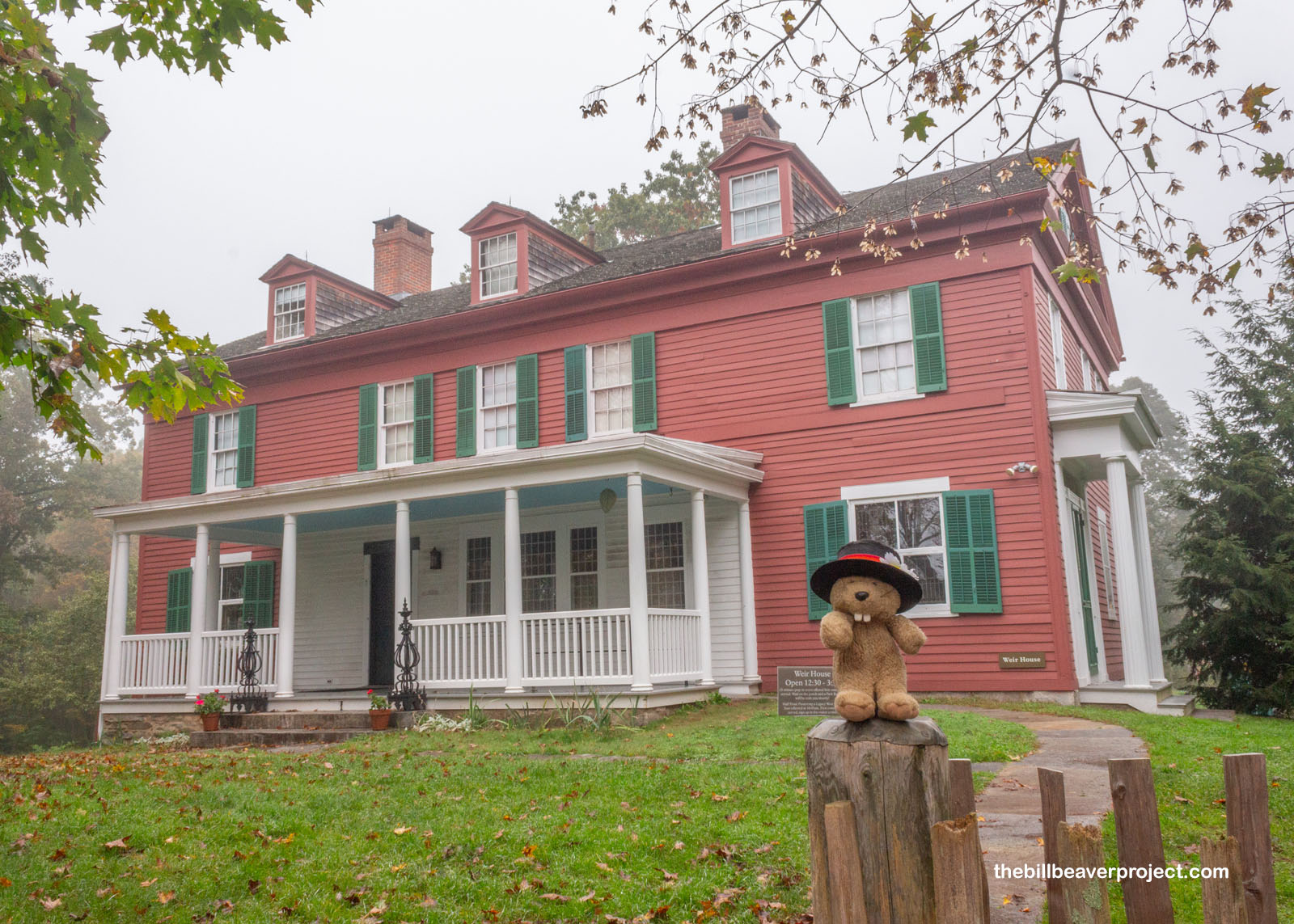 |
Within three years, Mr. Weir, who usually painted plein air, or out in the open, built a studio on his new farm to handle Connecticut’s moody weather. Realizing how a studio’s walls could impact how colors looked, he painted the inside gray and put stars on the ceiling. Here, he began his transition from regular portrait painter to groundbreaking Impressionist, using the lush forest around him as inspiration!
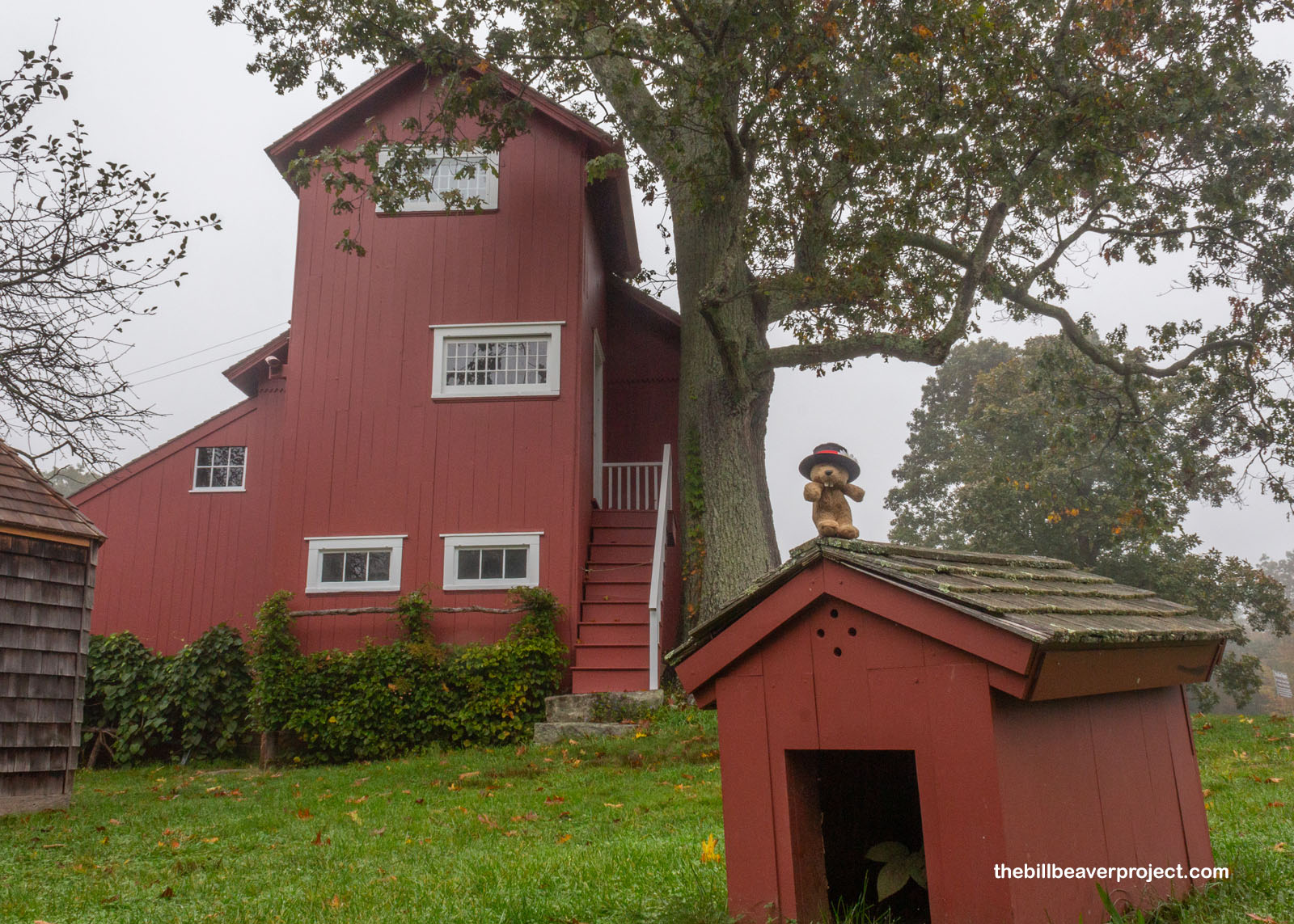 |
Of course, there were animals here—it was a farm after all—but the Weirs were hobbyist farmers. Mostly, the three Weir children enjoyed playing with ponies and donkeys, who made their appearances in some of Mr. Weir’s paintings, like New England Barnyard and After the Ride! Many of their names have been lost to the ages, but Cora Weir’s favorite pony was named Ned Toodles!
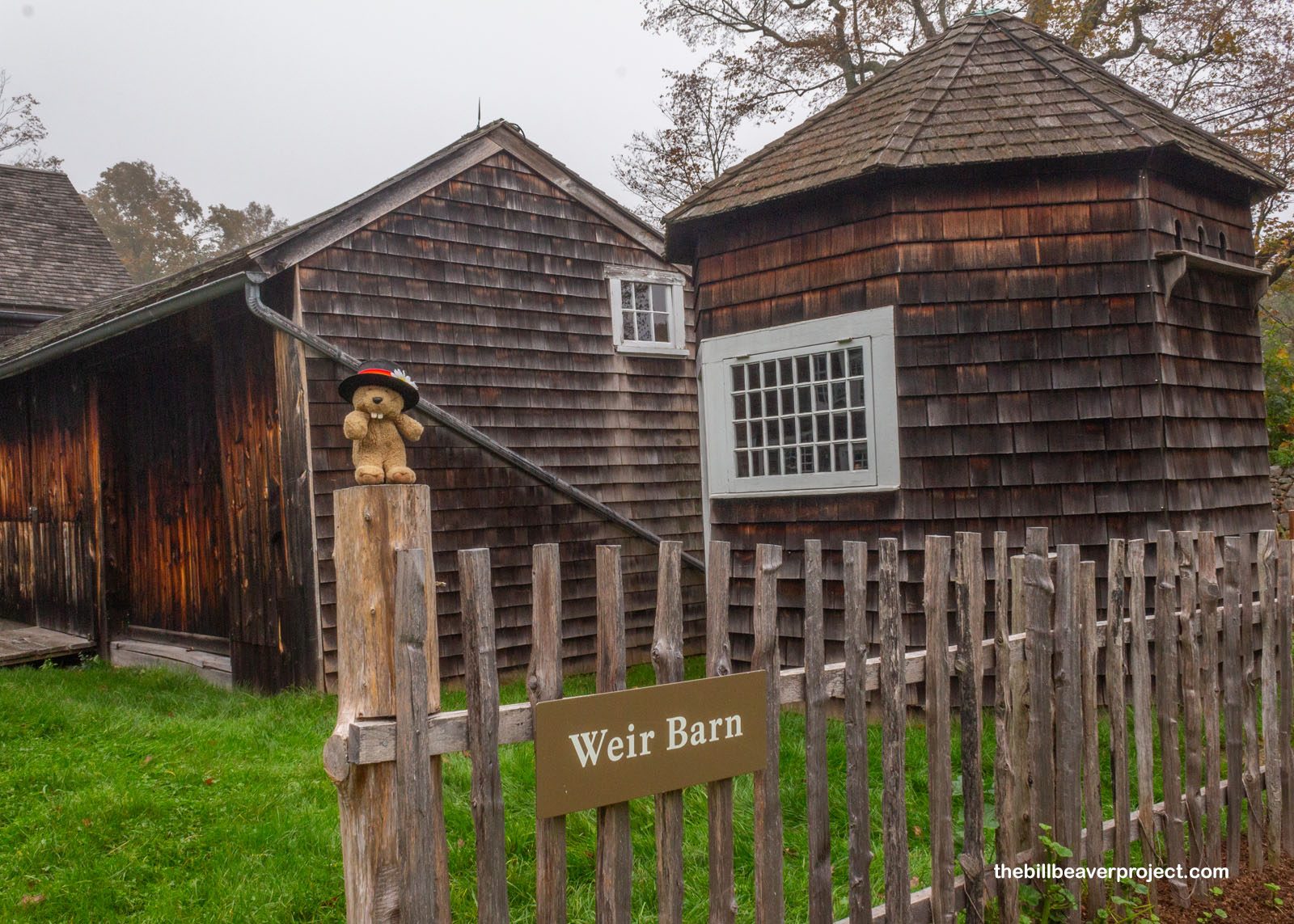 |
In addition to animals, the Weir farm was full of gardens, but of the ornamental variety. There was a sunken garden, a terraced garden, and this one, the secret garden! It didn’t originally start as a secret, but the deutzia hedges around it grew so big and so thick that they completely enclosed it! The secret garden of today is a restoration from 1995, using photos from 80 years earlier to match up the layout and the plant species!
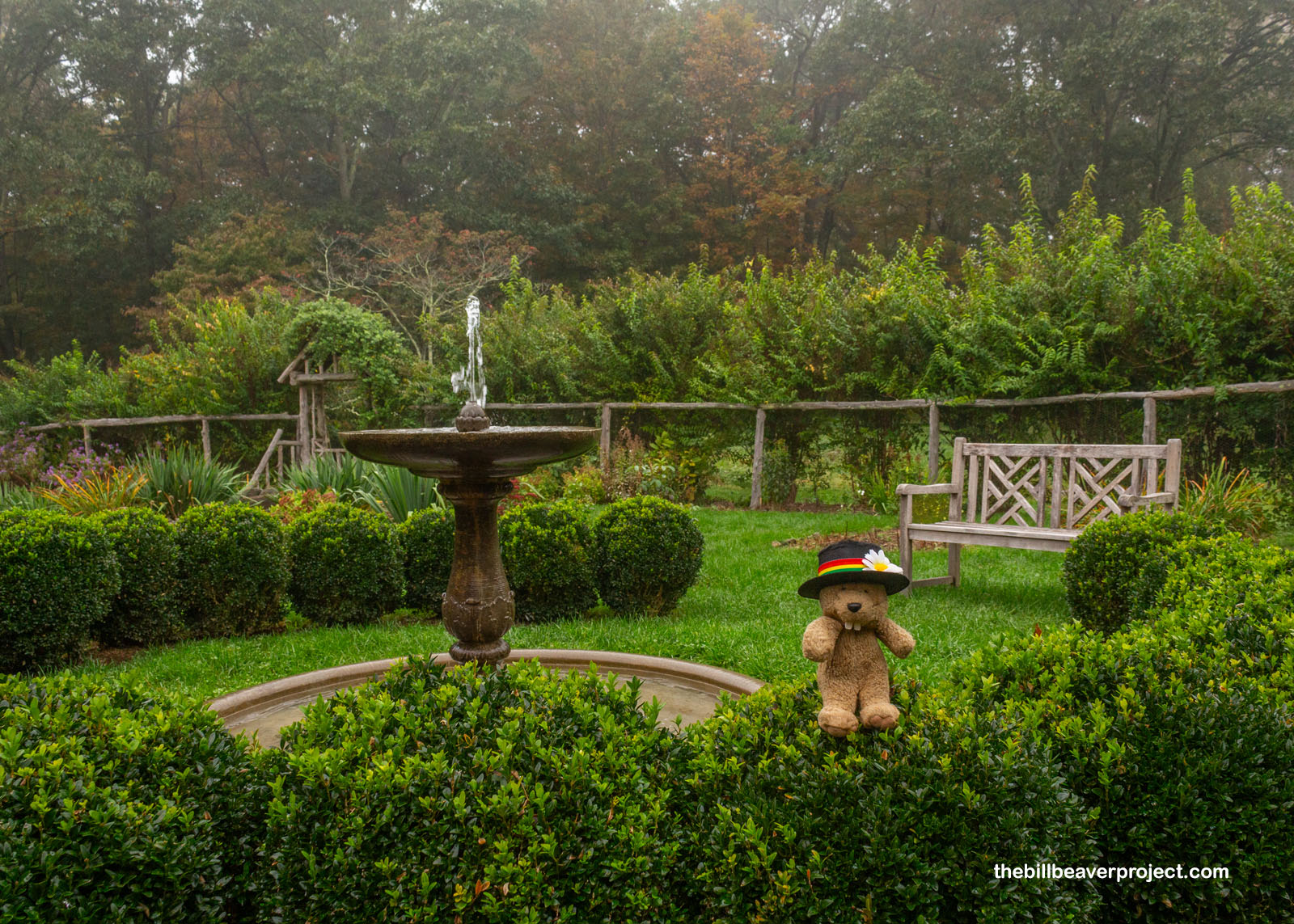 |
Oh! And Mr. Weir also built a pond using a $2,500 prize that he won for his painting, The Truants, in a contest held by the Boston Art Club! Though I saw a very well-intentioned Lastleaf display yesterday, maybe this time, I’d get some real New England color!
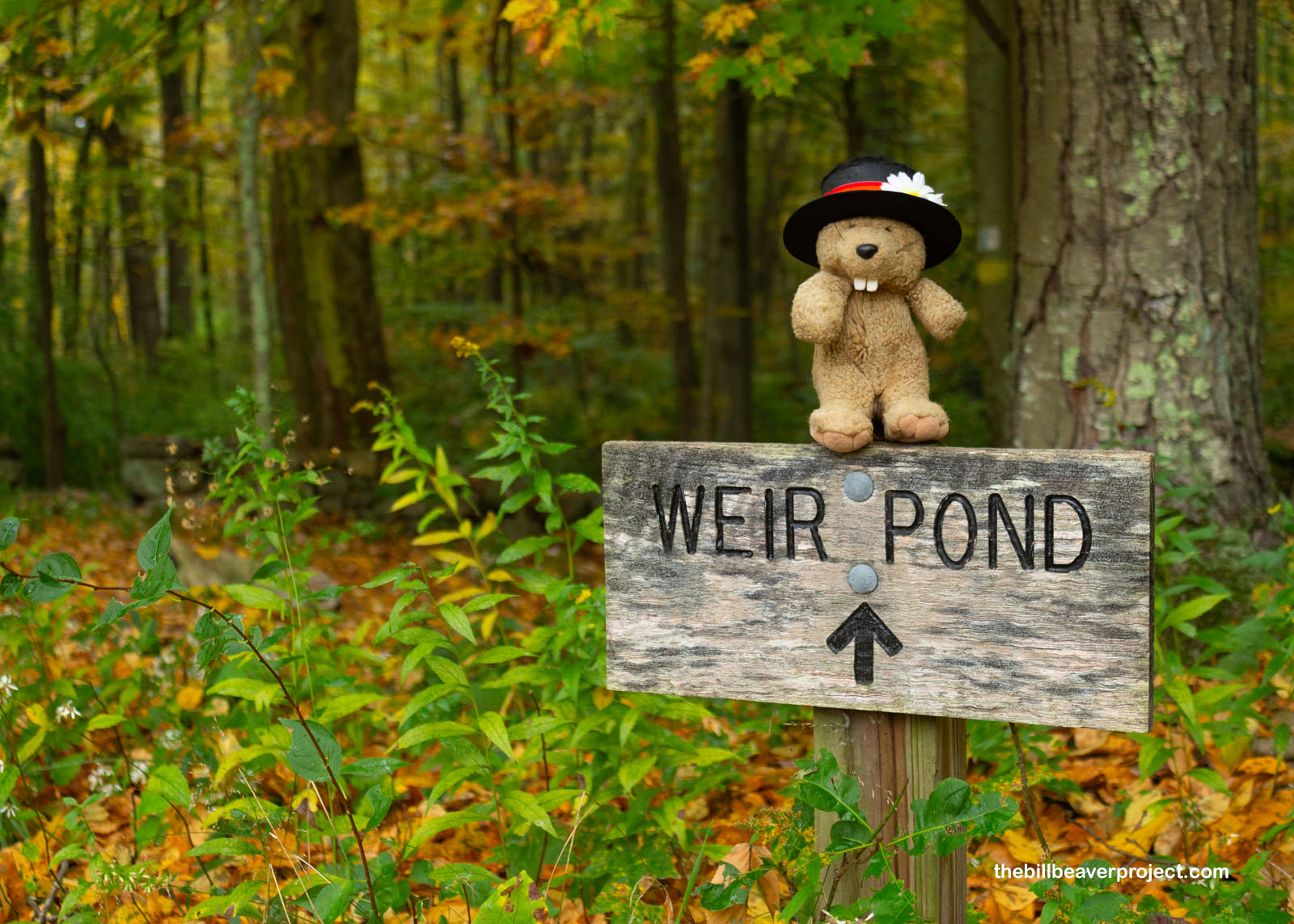 |
Things were looking promising as I set off down the trail. Sure, the mist was turning to drizzle, but the leaves had formed a lovely golden carpet underfoot! Maybe the leaves up ahead would be just as vibrant!
 |
 |
No matter what lay ahead, boy, were the mushrooms ever cool! There were tiny oyster mushrooms completely coating fallen logs, and as I approached the pond, I found the most explosively colored Pholiota mushrooms as well! At least, I’m pretty sure that’s what they are. For that reason, I did not nibble on any of them!
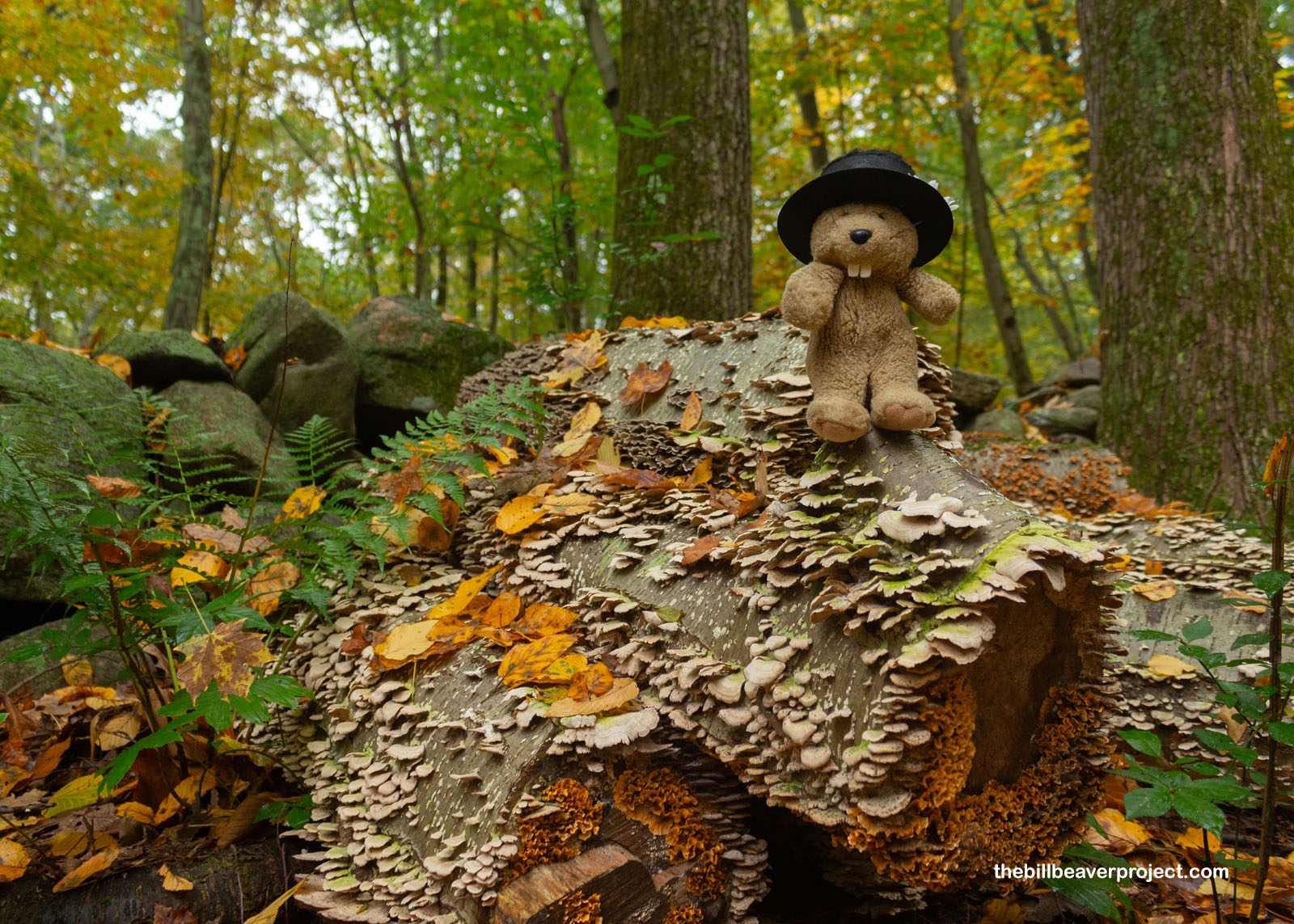 |
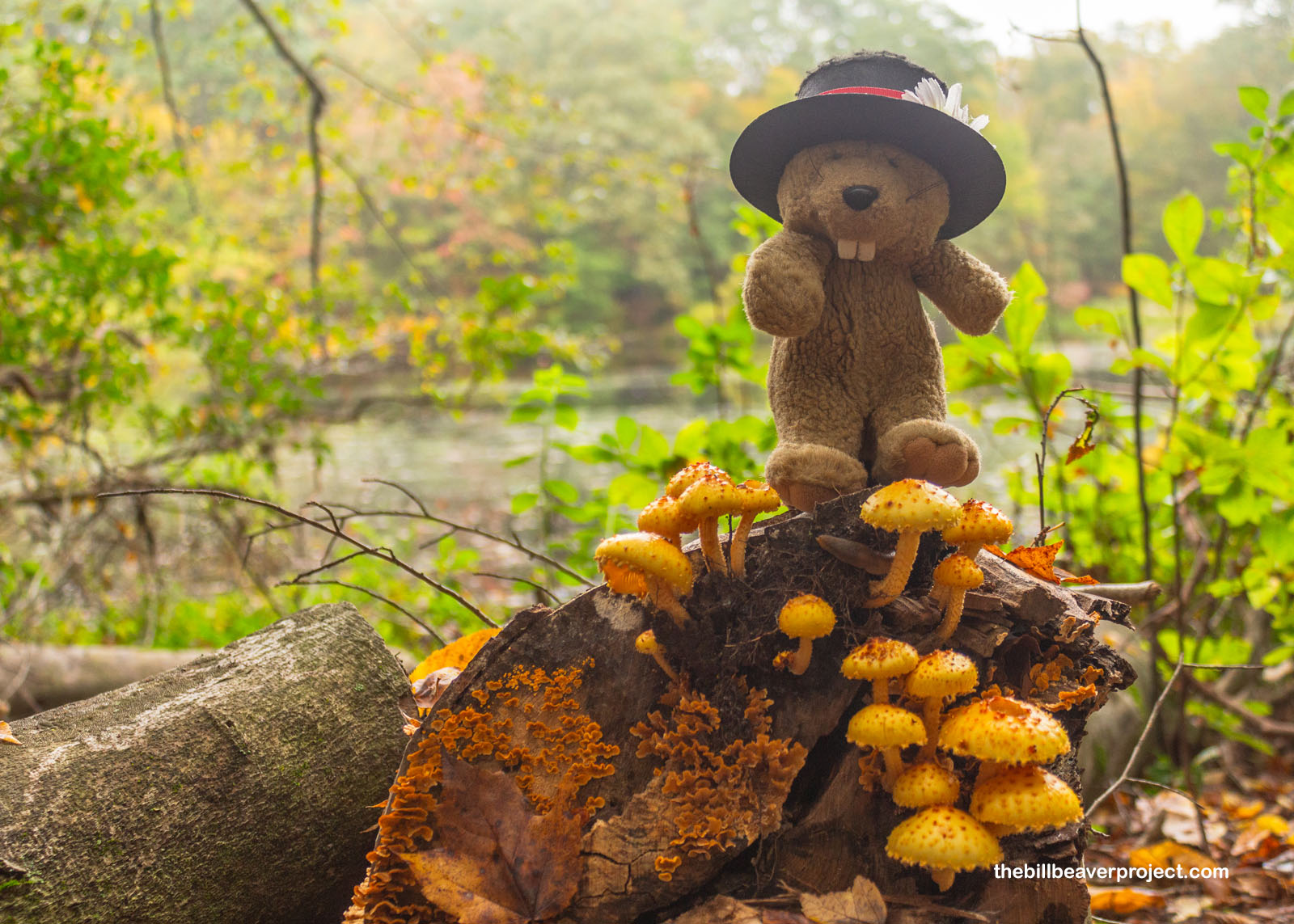 |
Then I reached the pond at last, and well, it wasn’t as explosive in color as the mushrooms, but there were a few good patches! Back in the day, there was a boat ramp and a gazebo on a little island in the middle of this hand-dug pond, but today, it’s just water, fish, and the dam holding them all in place. It’s an important pond in the history of Weir Farm, though, because it was the threat of building houses over it that led to the farm being preserved!
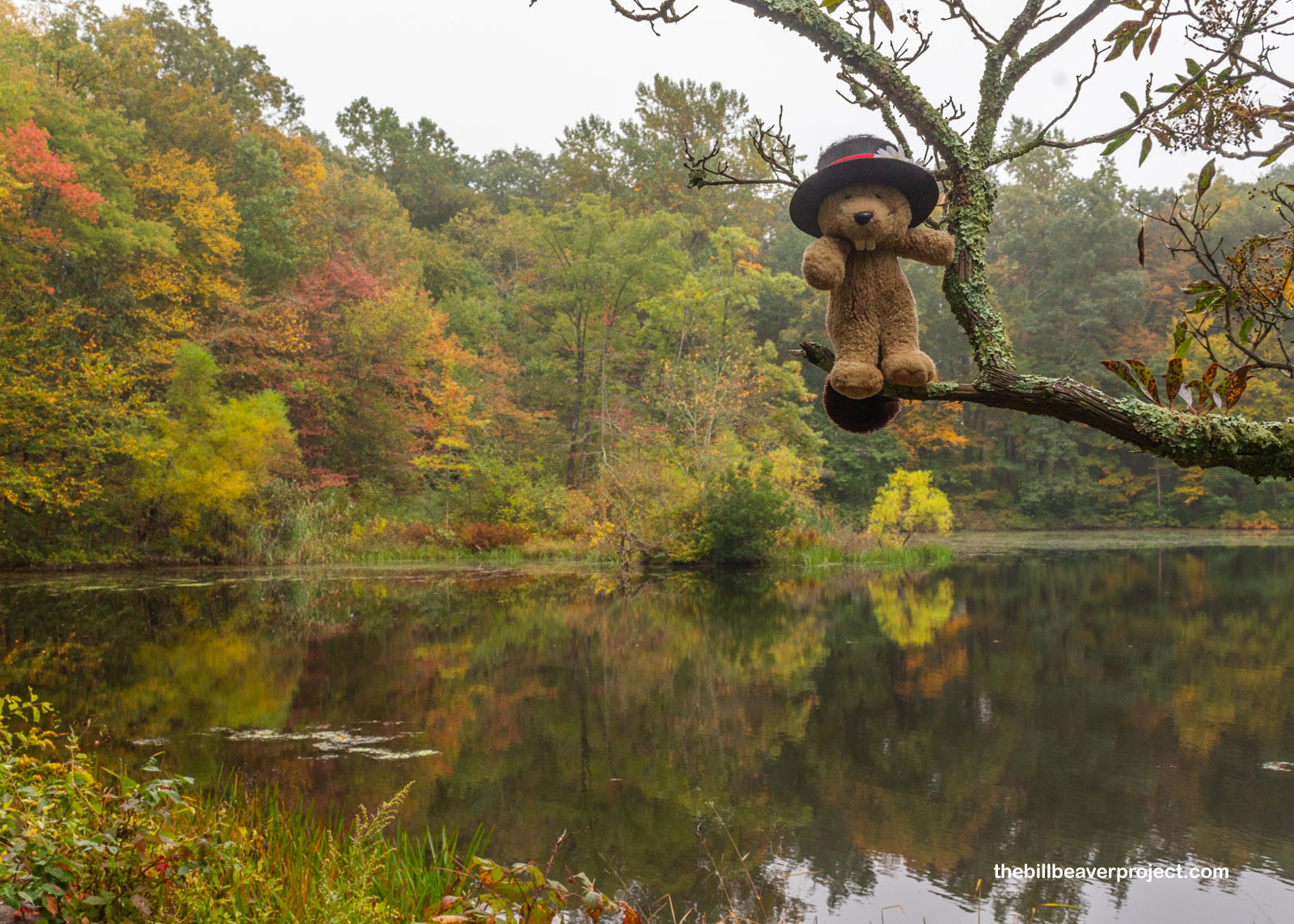 |
On my way back from the pond, I spotted an odd box just lying by the side of the trail. It turns out, this was much more than just a box. It was Mr. Weir’s compromise between enjoying plein air painting and dealing with four seasons. This “Palace Car,” co-opted by his resident farmer, Paul Remy, could be pulled by oxen anywhere on the farm that needed a fresh depiction on canvas! With windows on all sides and an oil stove, this portable studio made for smooth work in all kinds of weather!
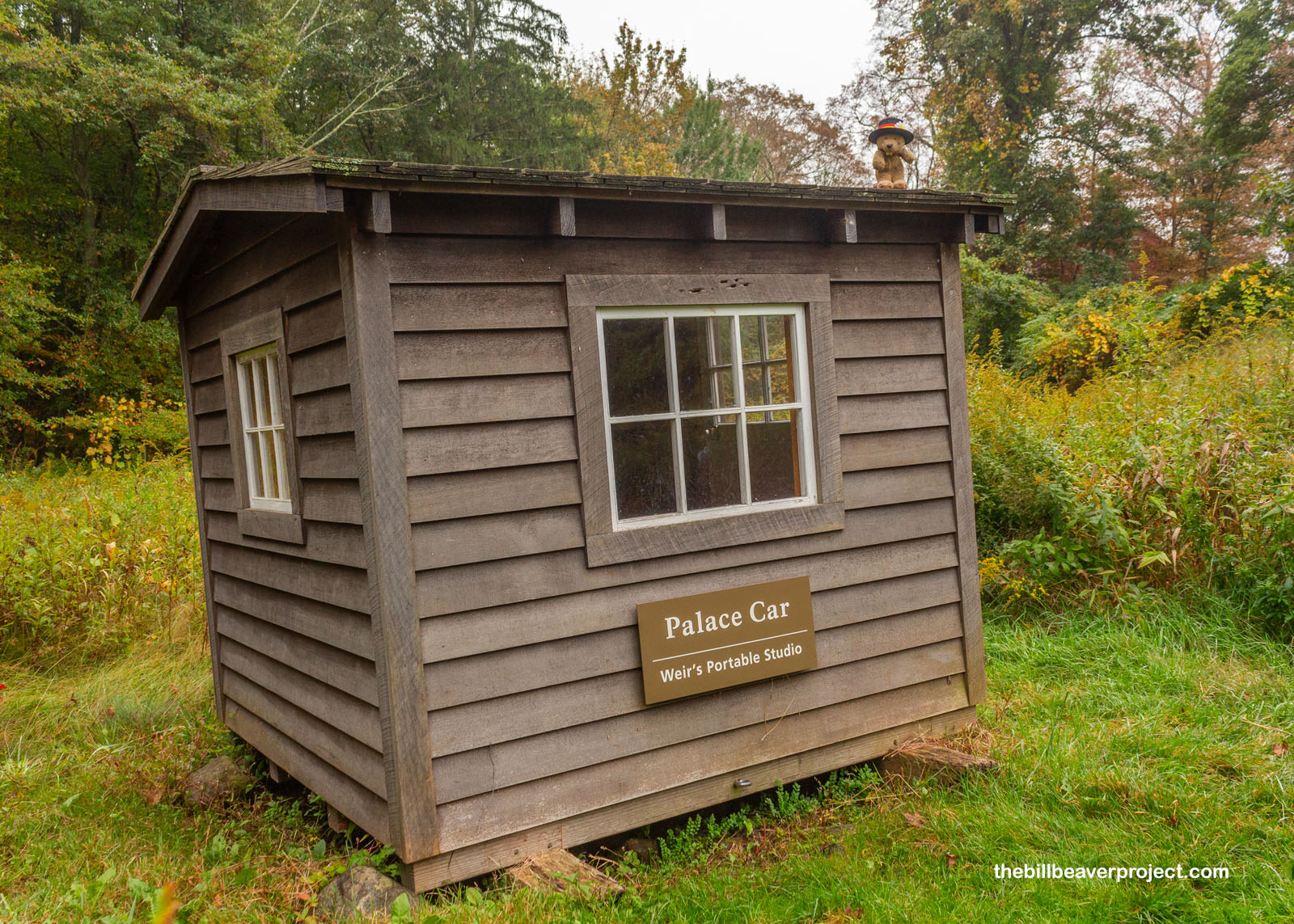 |
And then, as with yesterday, my day concluded back in Massachusetts, because there was one place I knew I couldn’t miss on this New England adventure, rain or no rain! That was the Dr. Seuss National Memorial Sculpture Garden in Springfield!
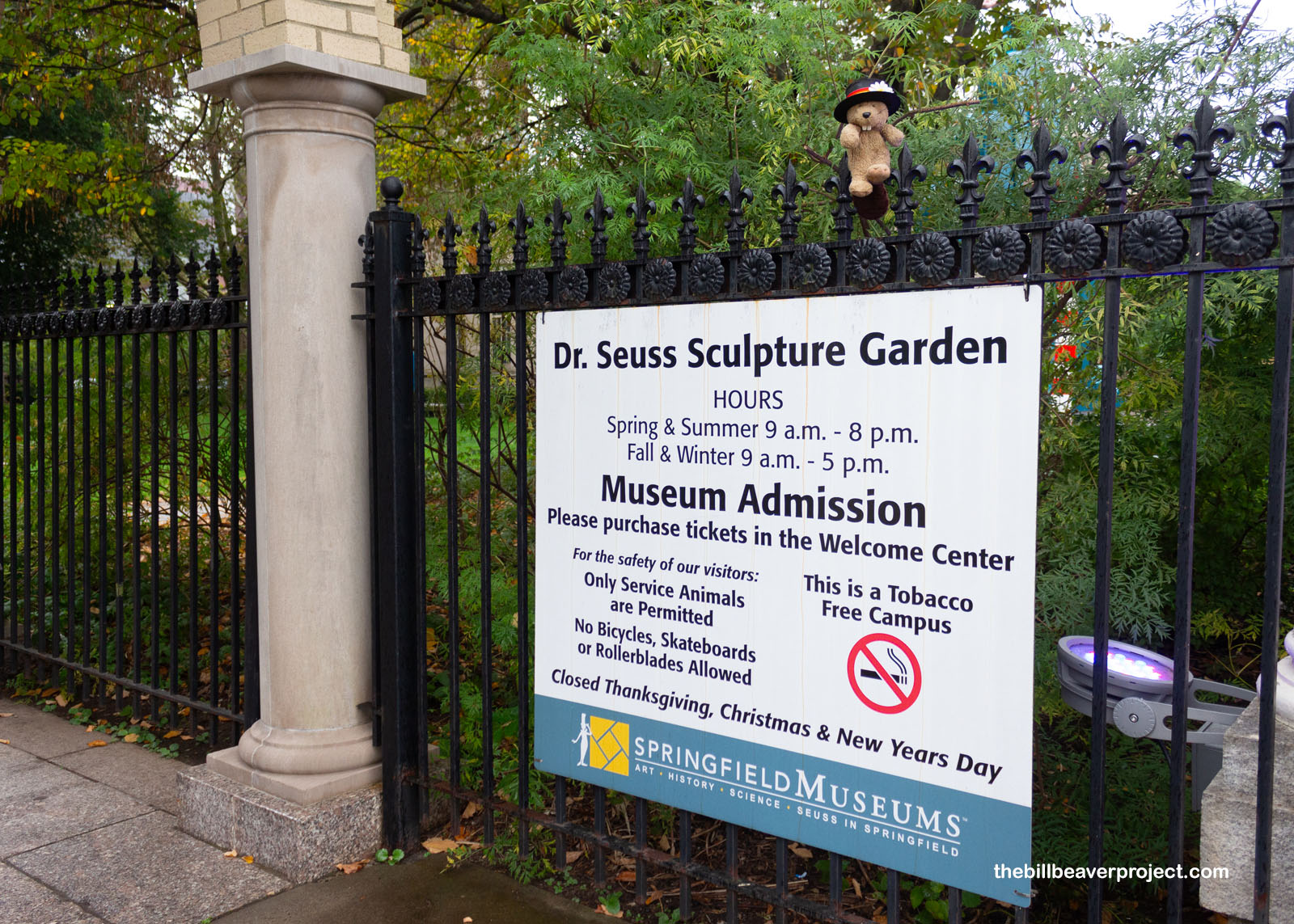 |
Theodor Seuss Geisel was a Springfield local! This is where he was born and where he grew up, where he learned to draw and where he published his first book, And to Think That I Saw It on Mulberry Street, now widely banned for its cartoonish depictions of Black folks. But his main inspiration was the local zoo, where his dad was superintendent! He’d get horns and fur and reimagine them into whimsical creatures that would later show up in his drawings. The “Dr.” in Dr. Seuss came about much later as a tongue-in-cheek reference to the doctoral degree he left unfinished at Oxford!
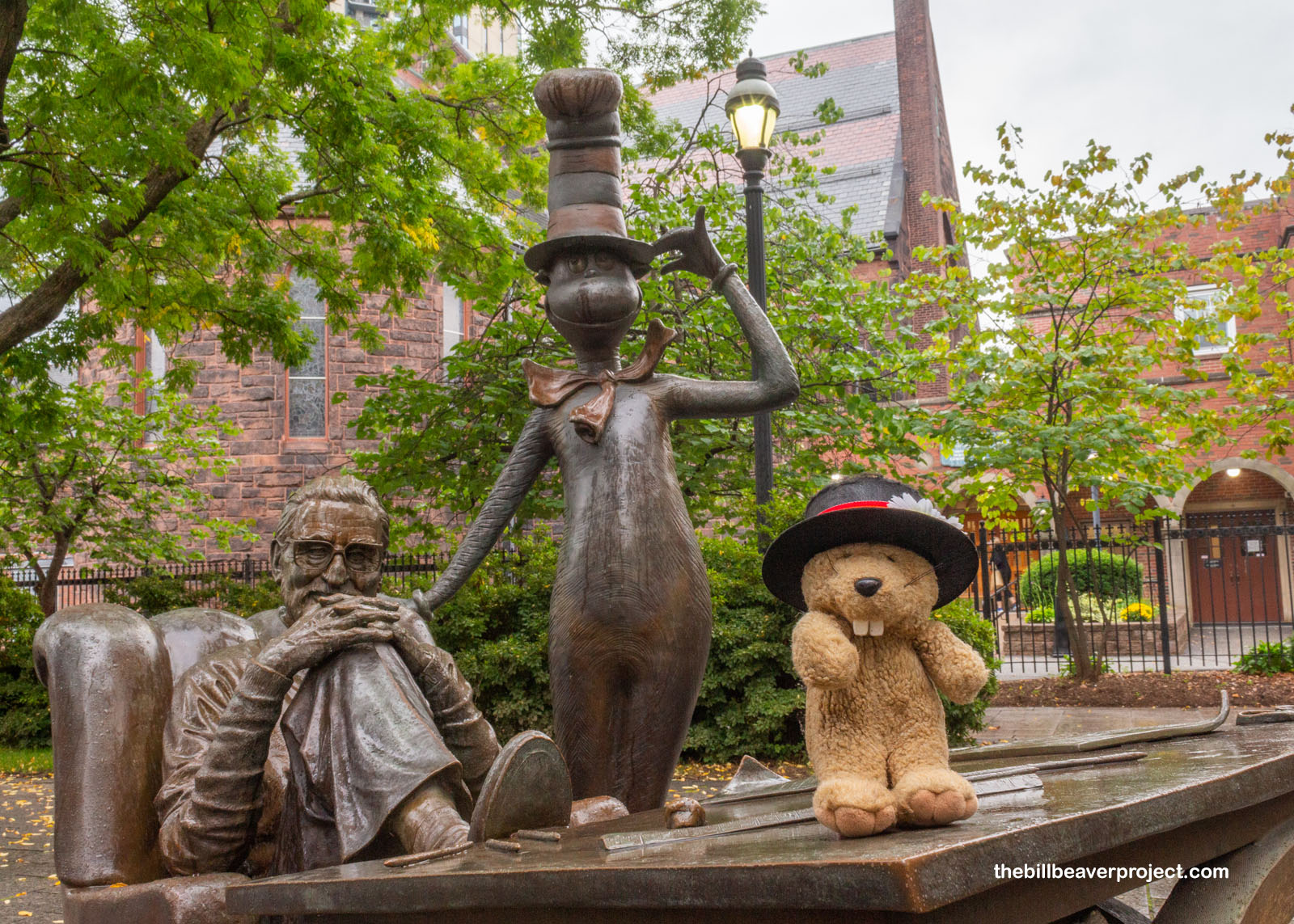 |
The Dr. Seuss National Memorial Sculpture Garden came to be much later in 2002. Sponsored by his widow, Audrey, the magnificent bronze sculptures here were the work of his step-daughter, Lark Grey Dimond-Cates! My sculpture circuit started with a stack of turtles supporting their self-proclaimed king, Yertle the Turtle! Yertle wanted to be king of everything at the expense of the other turtles, but the more he demanded of them, the flimsier his rule became until Mack, at the bottom, burped and sent the whole tower toppling!
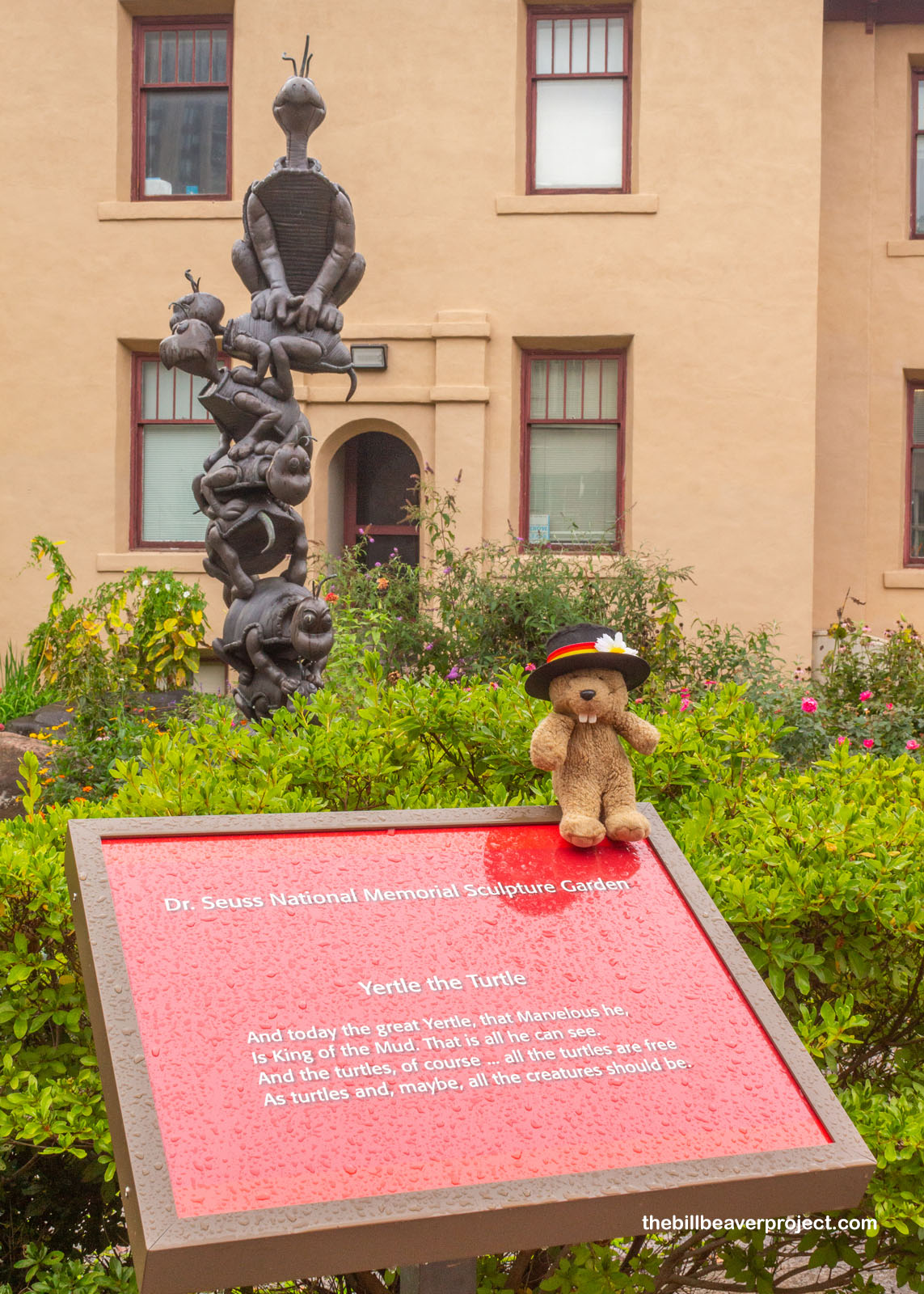 |
The sculptures started small, like the mysterious, magnificently-mustachioed Lorax, who protests the destruction of his forest home by the greedy Once-ler to make “Thneeds,” which everyone needs! Despite the Lorax’s efforts, the Once-ler destroys the whole forest then ends up bankrupt because of his short-sightedness! The Lorax goes away, but the boy who asks to hear the story is tasked with replanting the forest so maybe, the Lorax will return.
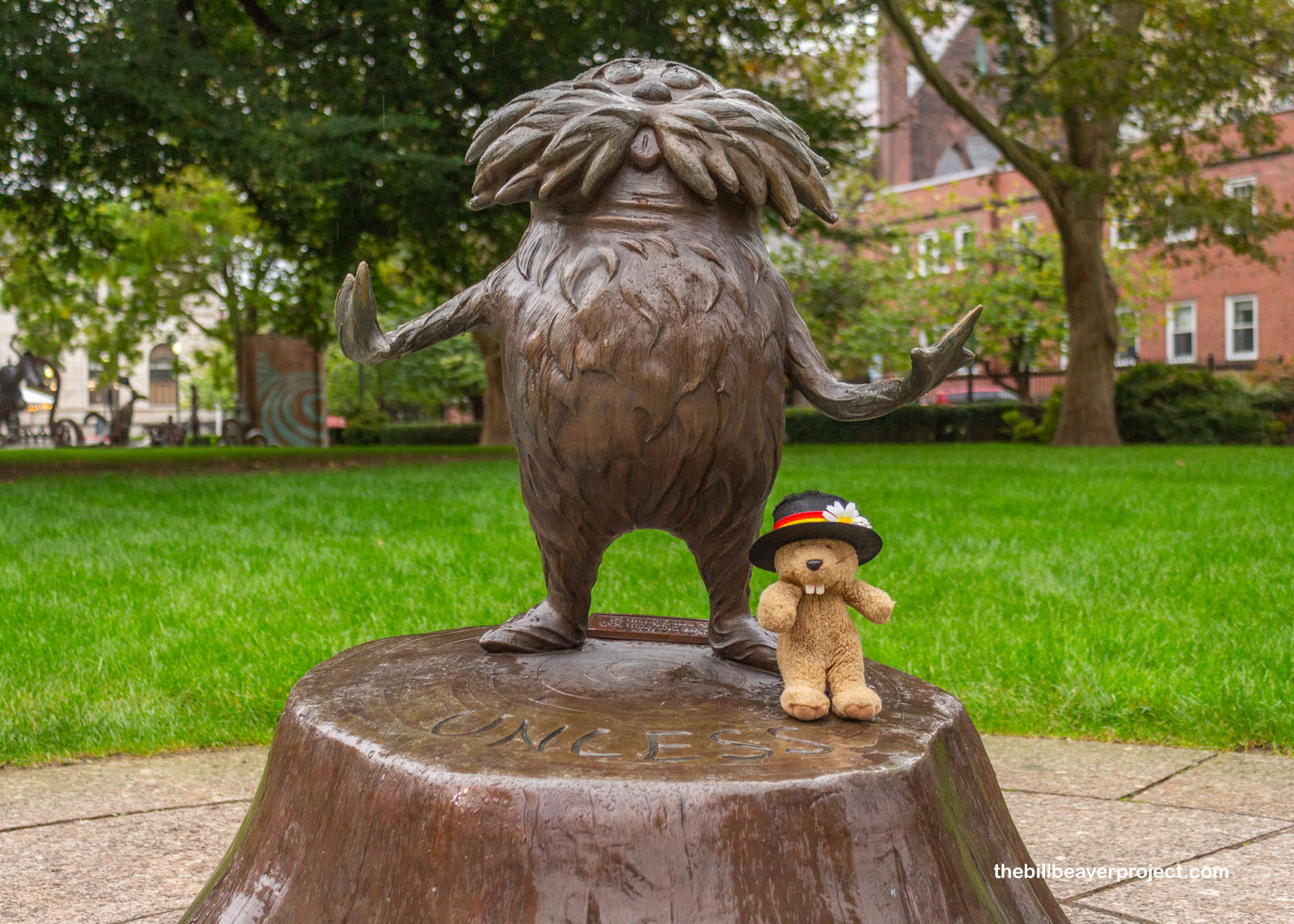 |
Then there was a colossal sculpture of Horton the elephant, the daintiest of pachyderms! Why, Horton could hear the cries of the teeny-tiny Whos of Whoville living on a dust mote that he kept on a clover blossom! And he defended their existence while the other animals mocked him! He even sat on an abandoned egg to keep it warm, while the other animals mocked him! Nonetheless, he stuck up for those who couldn’t stick up for themselves, no matter the social pressures!
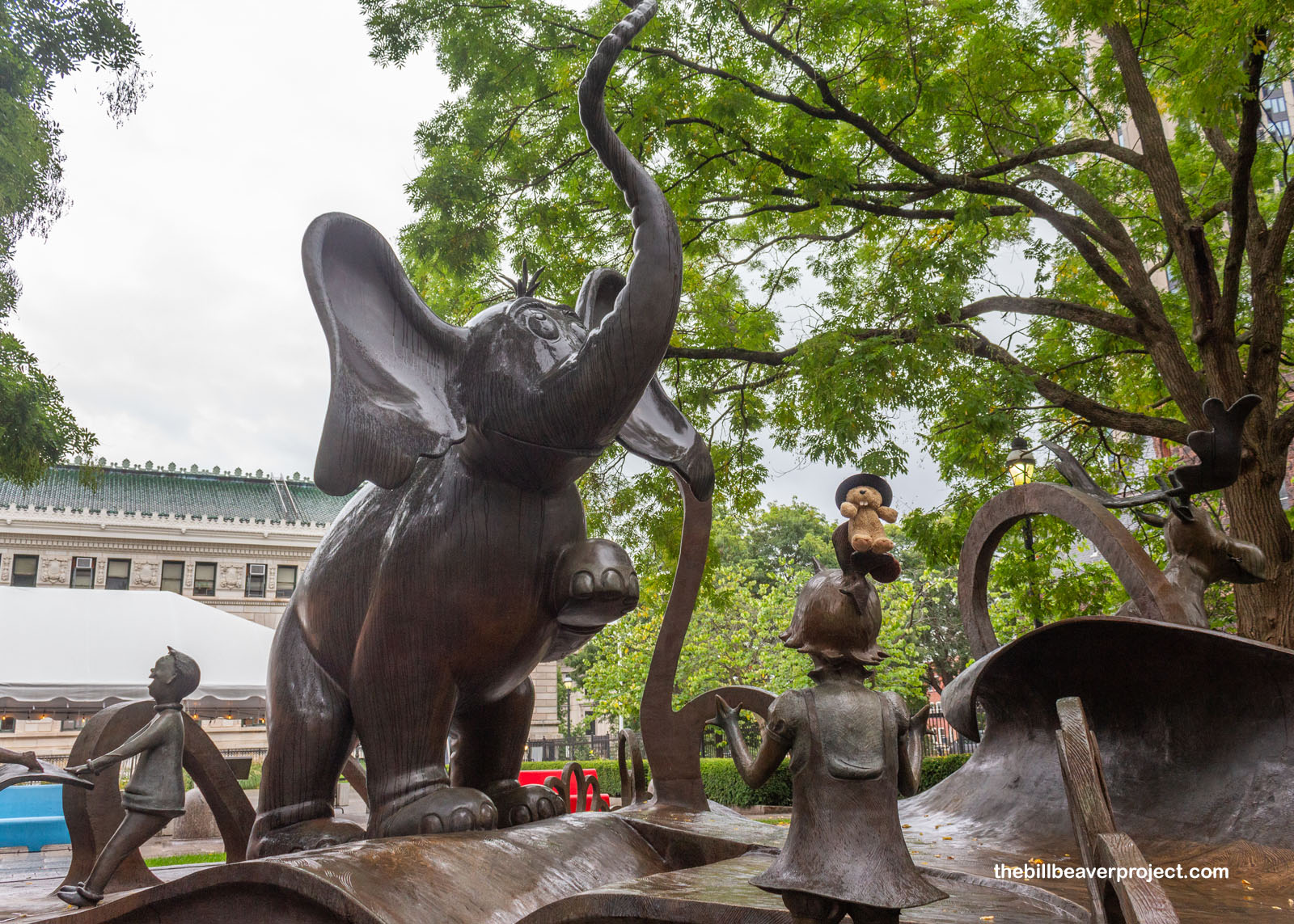 |
And there were more classic characters, like Sam, the purveyor of green eggs and ham, who just wanted his stubborn friend to try new foods! Then there was the Grinch and his dog, Max, who stole Christmas from the same Whoville Whos that Horton was trying to protect! The lessons behind these stories were that new things can be good and Christmas isn’t just about presents but being with those you care about!
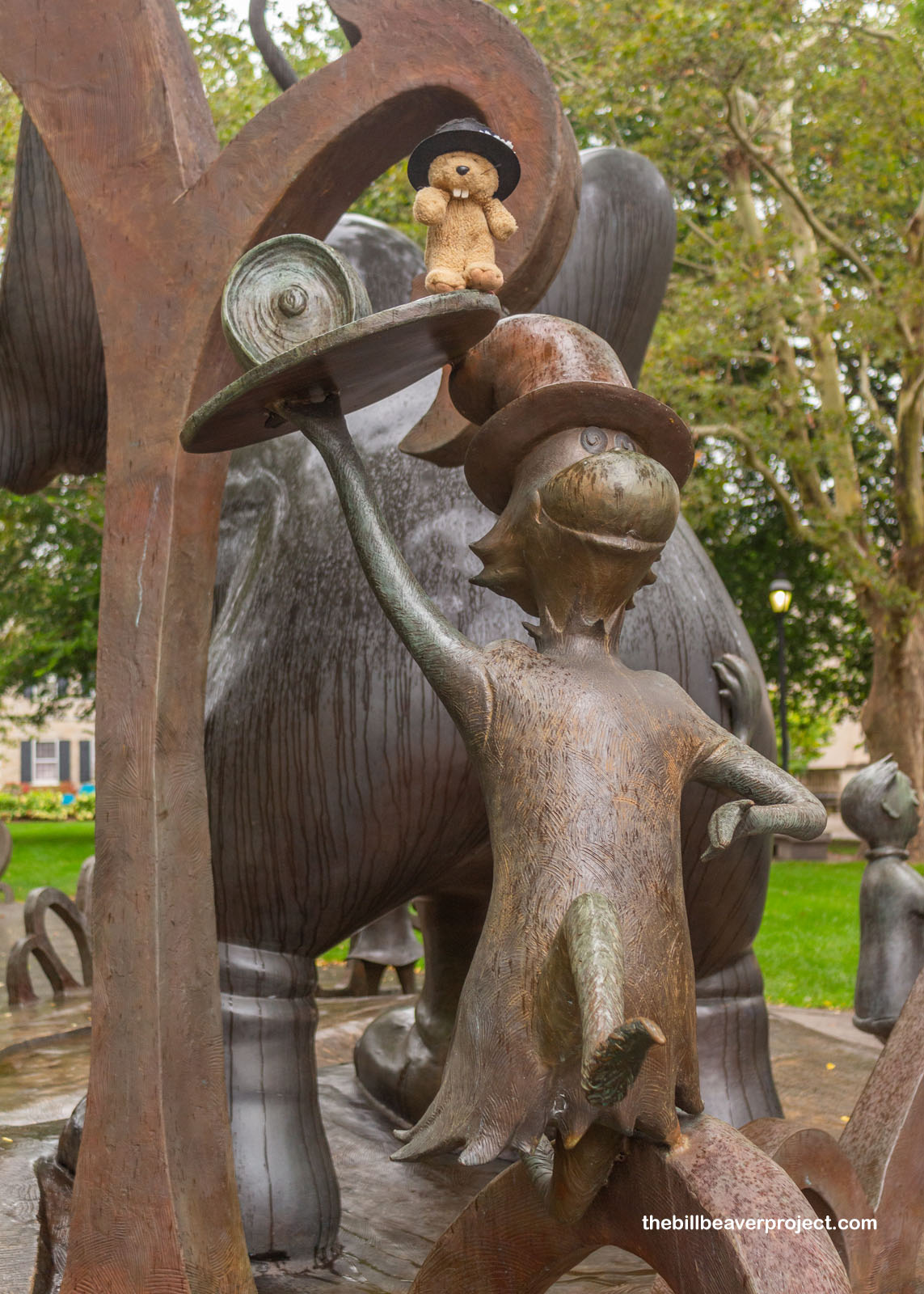 |
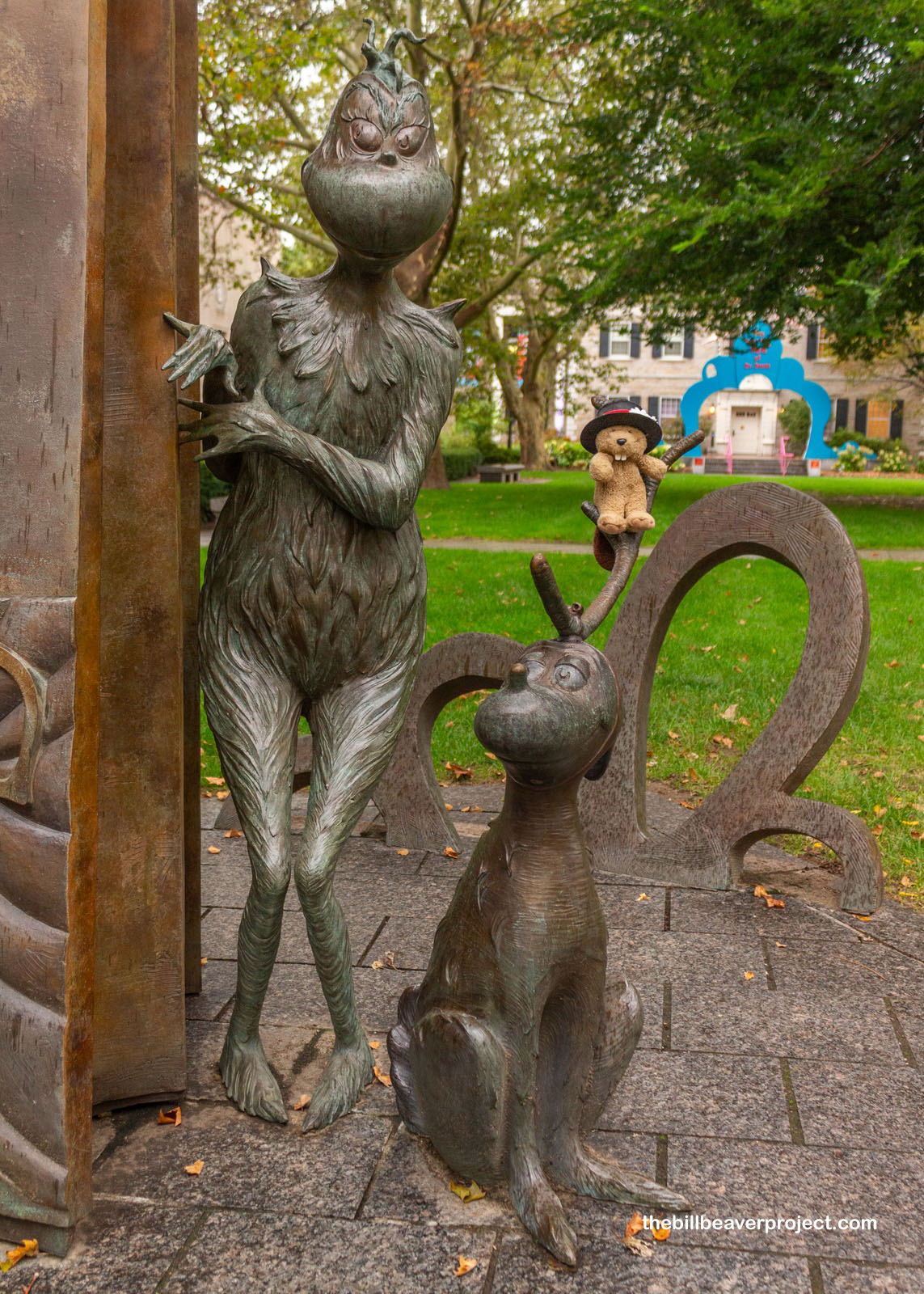 |
As recently as 2017, the sculpture garden got a fully fledged indoor portion, a museum called The Amazing World of Dr. Seuss! That seemed like just the place to conclude my tour of this fantastical spot!
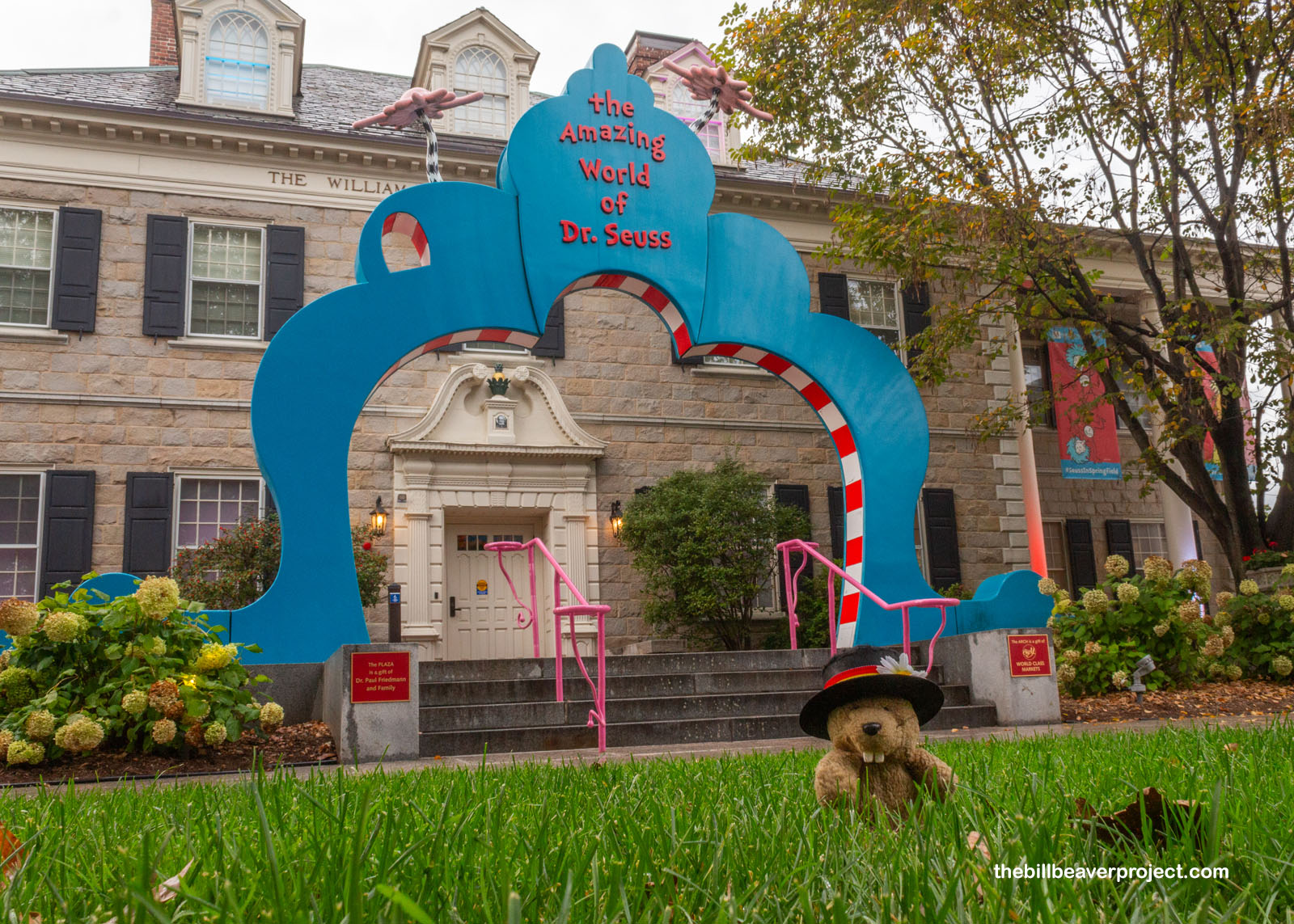 |
Inside the museum were more sculptures, like the most famous Seuss creation, the rascally Cat in the Hat, and my personal favorite, the star of Oh the Places You’ll Go! The bottom level was mostly for kids to play on and around, but upstairs (no photos allowed) were rooms housing collections of the doctor’s early drawings, his notes and letters, and even some sculptures he’d made from animal parts his dad had given him from the zoo! There were a lot more parts to the life of the rhyming author than I ever realized!
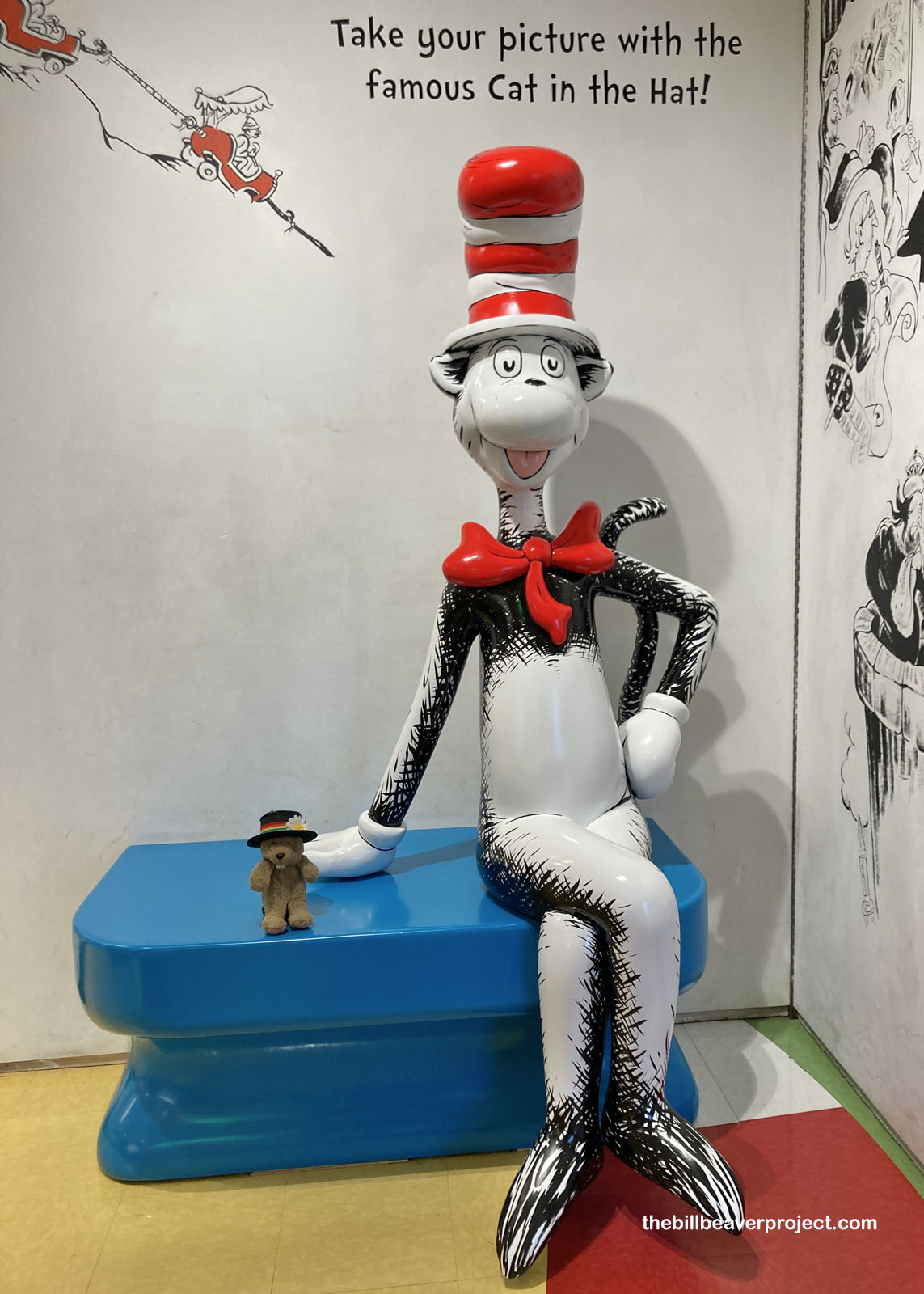 |
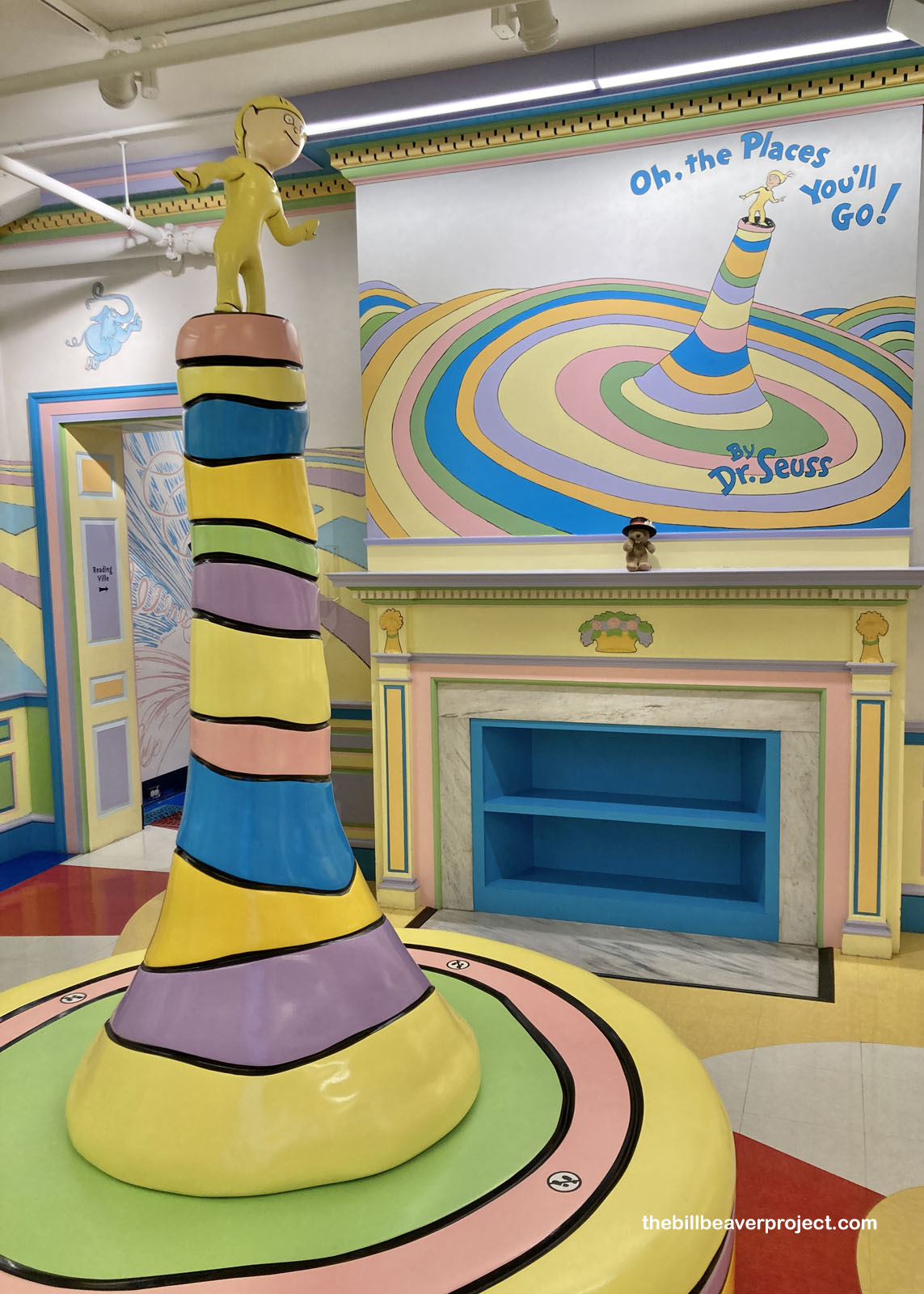 |
The museum closed sharply at 5:00 PM, which left me just enough time to see one more piece of Springfield history: the Springfield Armory! Now part of Springfield Technical Community College and surrounding a mosquito-infested soccer field, the armory was established in 1777 as the federal arsenal to supply the Continental Army during the Revolution! After the fall of its sister arsenal at Harpers Ferry during the Civil War, it became America’s only arsenal for a time! That made it necessary to not only store weapons here, but to build them as well! As early as World War I, the armory became a tourist attraction, open all the way until 1968!
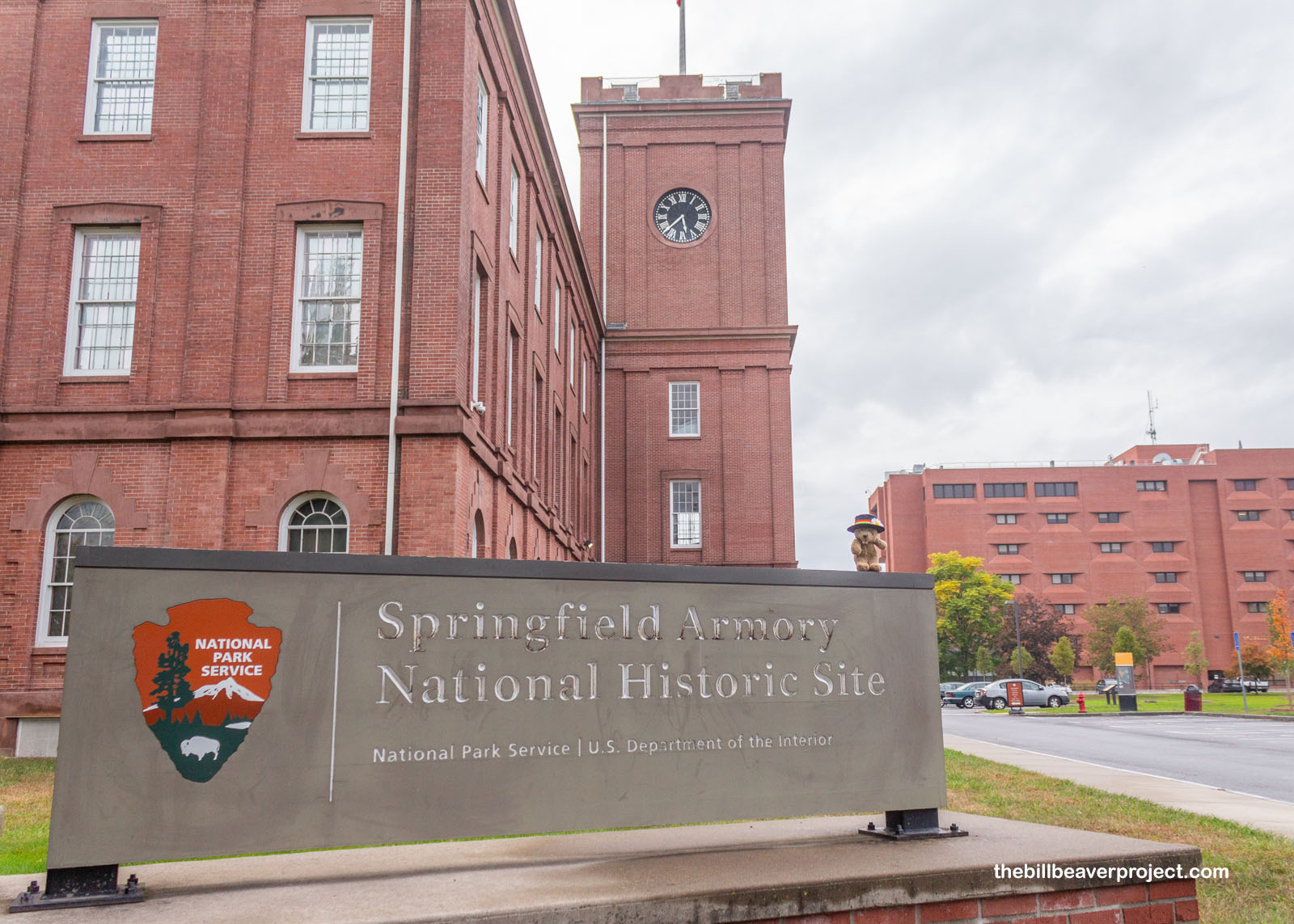 |
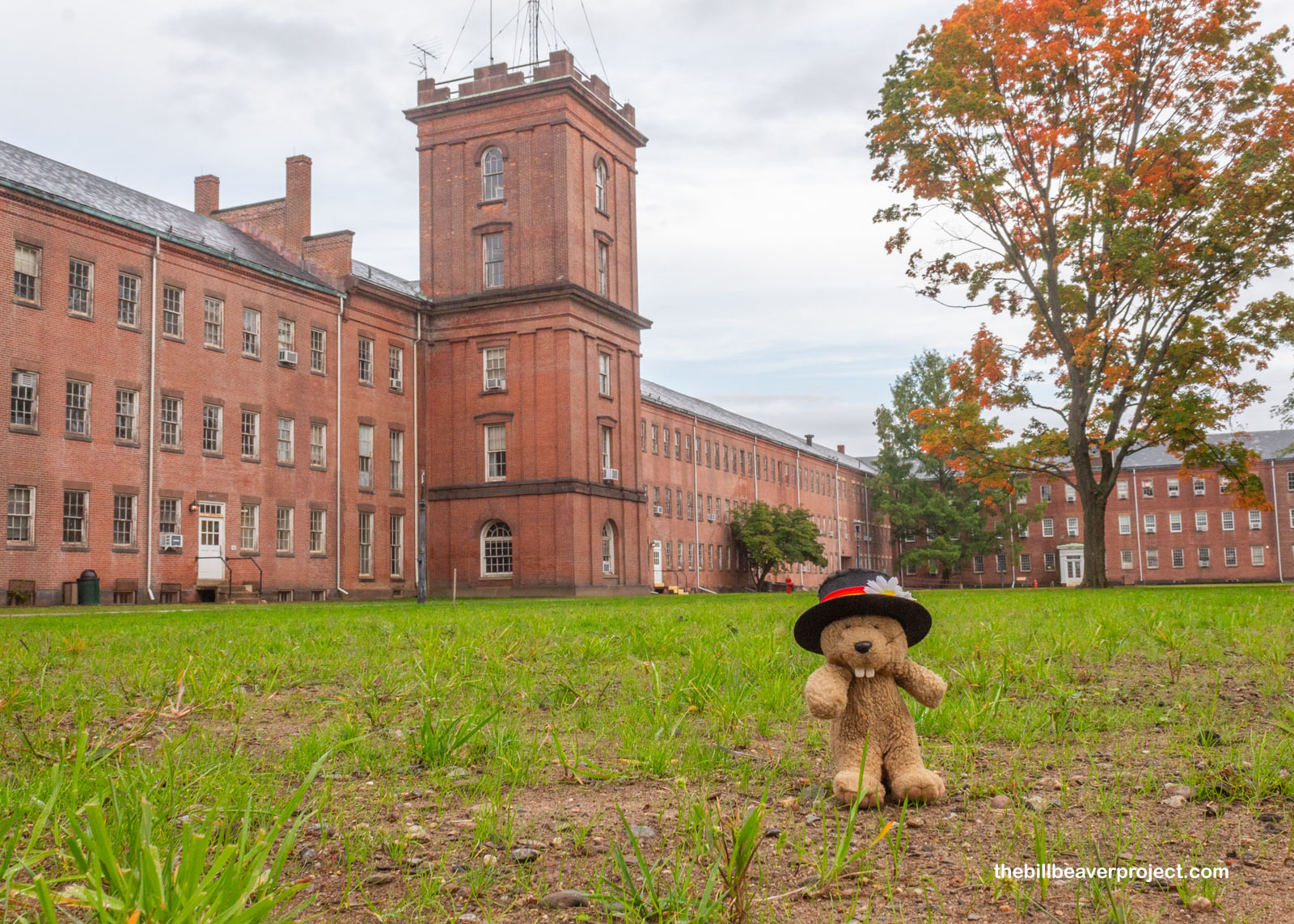 |
Just then, I spied something that brought the whole day in a full circle, a Connecticut Connection, you might say! Colstville National Historical Park didn’t have a sign to show what it was, but parked right under the Armory’s clock tower was a mobile sign! Until the park gets its own visitor center, this community outreach van is it! I wasn’t sure why the Coltsville van was all the way up here in Springfield, or what its hours of operation were, but I sure was glad to see this step being made toward getting the park finalized!
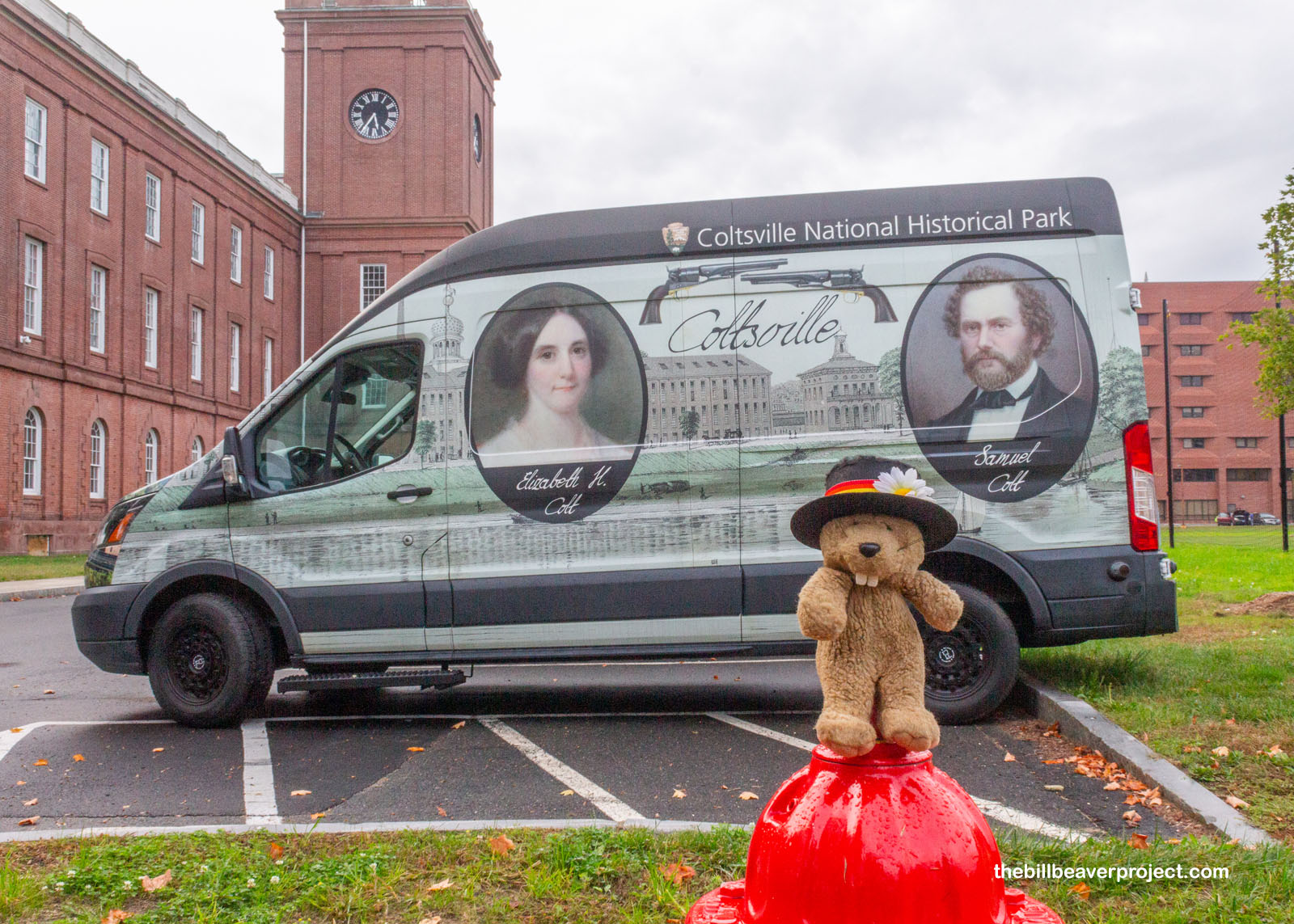 |
And even four days after arriving here, I feel like I’ve barely scratched the surface of this area’s history. In fact, tomorrow is Boston. Boston! It’s practically the birthplace of the US of A, before the paperwork anyway! With more rain in the forecast for tomorrow, I’d better get in touch with my aquatic nature and make preparations for my photo equipment!
I have brains in my head,
plus two feet with no shoes,
and can steer myself any direction I choose!

 Previous Day |
Total Ground Covered: 769.8 mi (1,238.9 km) |
 Next Day |
